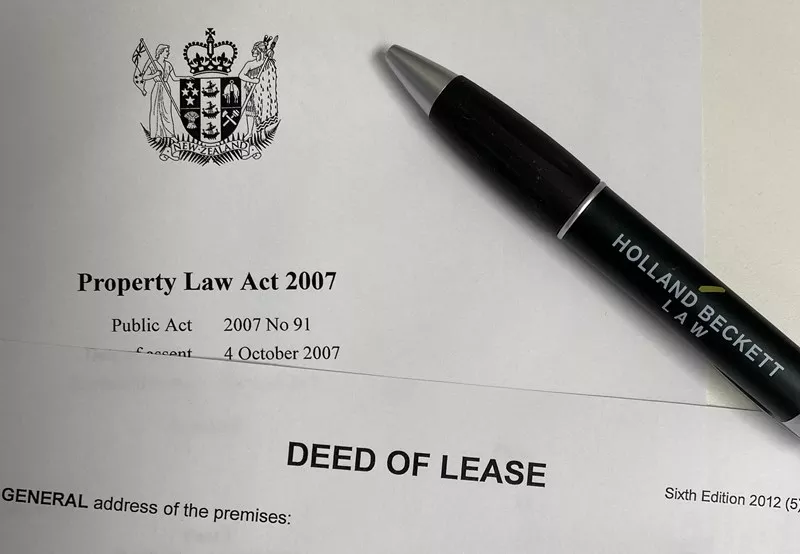Civil Litigation & Dispute Resolution
Litigation can be complex and requires strategic advice, risk analysis and advocacy. Our litigation team has extensive experience in the courtroom and in other forms of dispute resolution. Our experience enables us to navigate clear pathways through difficult situations to achieve desired outcomes for our clients.

Our litigation team represents our private, institutional, and regulatory clients across a broad sphere of disputes.
We promote early and pro-active engagement and recognise that each client requires a strategic approach focused on their key objectives. We on committed to providing commercially pragmatic and cost-effective advice.
Our litigators regularly appear in the courts at all levels, and in specialist jurisdictions. We represent our clients across other established forms of dispute resolution, including mediation, adjudication and arbitration.
We also work closely with the Independent Bar, which provides a complete representative package of expert advocacy and efficient litigation support.
Our Experience Includes:
- Property and lease disputes
- Commercial and contract disputes
- Trust and estate administration disputes
- Company disputes
- Construction disputes
- Insolvency and corporate recovery
- Regulatory prosecutions and inquiries, including crisis management support
- Local Government, including information requests, bylaw issues and Council consultation processes;
- Public law, including judicial review, managing and reviewing risk, advising on privacy and information and regulatory issues and Bill of Rights issues.
Our Civil Litigation & Dispute Resolution Team
Related News & Resources

Directors’ Contractual Liability. Dual Capacity – one signature but two roles?
When a company director signs an agreement on behalf of a company they may also be required to sign a personal guarantee, this means they are accepting personal liability for the obligations of the company.
Personal guarantees are common in several types of agreements, for example leases, supply/trade agreements, or loans. They provide additional security for lenders, allowing lenders to bypass a company when there is a breach of the agreement and look to the assets of the guarantor.
However, in certain circumstances a personal guarantee may not be enforceable, including when a director has only signed an agreement once, in their capacity as a company director, and not in a “dual” capacity.
Where there is only one signature on an agreement, there is a presumption that a person who signs once is signing as an agent of the company – and not in their personal capacity. To hold that person liable as a guarantor, it must be shown that the person signed in a dual capacity: this means that they signed on behalf of the company and in their personal capacity.
Factors in Determining Dual Capacity
1. Whether a person has signed an agreement in a dual capacity is circumstantial, however there are factors that assist with determining whether a person has signed in a dual capacity. These include:
The structure of an agreement is an indicator of whether a director has signed in a dual capacity. Typically where there is a guarantee, an agreement will identify the contract’s parties – which will include the lender, the company (for example as borrower/principal debtor) and the guarantor. If the guarantor is not a listed party to the agreement this may indicate that the director did not sign in a dual capacity and is therefore not bound by any personal guarantee clauses within the agreement.
The description of the signatory is another factor – however, this is not a straightforward indication as to whether a person has signed in a dual capacity. If the person is listed merely as a “Director,” this typically suggests the signature was made only on behalf of the company. That said, context is important, and “Director” may also be used to describe someone who happens to be bound as a guarantor.
The wording of the clause is also a key indication as to whether the guarantee is effective. If the clause includes clear acknowledgements by the guarantor, for example, inserting their name in the clause and/or an express acknowledgement that by signing the agreement they are accepting personal liability as a guarantor, can support enforcement. A guarantee clause may reference a separate document. Overall, the clauses should be read carefully as they may merely be an agreement to obtain the personal guarantee in the future in a separate document.
While potentially more difficult to prove, evidence that the personal guarantee clause was explained to the individual prior to signing can support the argument that the individual understood and accepted the dual role. Oral or written statements may be used to demonstrate this, however the main issue with this comes down to evidence.
2. Whether a director has signed in a dual capacity can be a complex issue when there is not a separate signature section. These sorts of issues are unlikely to arise in modern agreements, but may still arise in older ongoing agreements where there is less clarity.
Clarity is Key
Determining whether a personal guarantee is enforceable when there is only one signature is a fact specific exercise – the language of the clause, the entire agreement and the circumstances need to be considered.
A personal guarantee clause may be insufficient on its own to make a director or shareholder personally liable for company debts. For such a clause to be enforceable against an individual, the individual should sign the agreement twice (once in their capacity as director of the company and again in their capacity as a personal guarantor) or the agreement should be clear that an individual has signed in a dual capacity. To avoid any issues, clarity is key. Agreements should be clear when a director or shareholder is committing themselves personally, not just on behalf of the company.

High Performance Sport New Zealand Ltd v The Athletes’ Cooperative Inc
In a recent decision, the Employment Court has ruled in favour of High Performance Sport New Zealand (HPSNZ), overturning a decision made by the Employment Relations Authority in January 2024.
In its initial ruling, the Authority had determined that HPSNZ was required to engage in collective bargaining with The Athletes Cooperative (TAC), a union representing both the individual and collective interests of its athlete members.[1]
The Court heard evidence from a number of current and former athletes, including several who have represented New Zealand at international events.[2] Their evidence highlighted deficiencies in the current funding system, particularly the lack of employment protections for athletes and the insufficient prioritisation of their interests and well-being.[3]
The key legal dispute centred on the circumstances in which a union may validly initiate collective bargaining with an employer in accordance with s 40 of the Employment Relations Act 2000 (the Act).[4] The Court ruled that for a union to validly initiate bargaining, it must be in an employment relationship with an employer.[5] Based on the context and purpose of s 40, the Court determined that such an employment relationship can only exist when members of the union are employed by the employer.[6]
The Court referred to the Supreme Court’s decision in AFFCO[7] where the word “employees” was held to have a broader meaning than in s 6 of the Act and covers persons seeking employment in some situations where those persons are not strangers to the employer in contractual terms. While TAC is a registered union and HPSNZ is an employer, the Court found that TAC’s members were not “sufficiently connected” to HPSNZ in a way that would establish an employment relationship for the purposes of s 40. It clarified that HPSNZ deals directly with the National Sporting Organisations and not the athletes directly and as such any reference to HPSNZ in the athletes’ agreements is limited only to funding and not an employment relationship.[8]
The Court’s decision clarifies the legal criteria for applying s 40 and the circumstances under which a union can validly initiate collective bargaining with an employer.
TAC has sought leave to appeal the decision to the Court of Appeal.[9]
As a further comment, the decision highlights the complexities of the relationship between HPSNZ, National Sporting Organisations and athletes in elite programs, in particular the application of funding and employment protections afforded to athletes. The final outcome of this matter will no doubt have a significant impact on the landscape of the New Zealand sports environment.
_____
[1] The Athletes’ Cooperative Inc v High Performance Sport New Zealand Ltd [2024] NZERA 43 (Member Anderson).
[2] High Performance Sport New Zealand Ltd v The Athletes’ Cooperative Inc [2024] NZEmpC 250 at [41].
[3] At [42].
[4] At [1].
[5] At [88].
[6] At [88].
[7] AFFCO New Zealand Ltd v New Zealand Meat Workers and Related Trades Union Inc [2017] NZSC 135, [2018] 1 NZLR 212 at [75].
[8] n 2 at [89].
[9] Dana Johannsen “Athlete union’s legal bid for collective bargaining with High Performance Sport NZ overturned” (16 January 2025) Radio New Zealand <www.rnz.co.nz>.

What protection do you have as a business purchasing goods? Contract and Commercial Law Act
Everyone knows about the Consumer Guarantees Act 1993 (CGA), which provides a “consumer” with remedies if a business has failed to provide goods or services to a reasonable standard. But what happens if you are a business purchasing goods? The answer is not found in the Consumer Guarantees Act 1993; it is found in the Contract and Commercial Law Act 2017 (the CCLA).
The CCLA implies seven conditions and/or warranties in a contract for the sale of goods:
right to sell;
conformity with description;
fitness for purpose;
merchantable quality;
conformity with samples;
rights of examination, and;
acceptance.
Not every breach of contract allows for rejection, but a trivial breach of a condition does. This means that a buyer can return goods supplied to a seller. Importantly, whether a term is a condition or a warranty depends on the construction of the sale of goods contract.
An important implied condition is “fitness for purpose”. This means that goods must be reasonably fit for purpose. But, unlike the CGA, this condition will only apply where the buyer makes known to the seller the particular purpose for which the goods are required, and that the goods are of a description that it is in the course of the seller’s business to supply. What this means is that when a buyer of a vehicle makes known to the seller that they will be using a vehicle to tow a caravan, then there is an implied condition that the vehicle is fit for that purpose; towing a caravan. This was the case in Finch Motors v Quinn (No 2) [1980] 2 NZLR 519. Mr Quinn, the buyer, told the seller that he wanted a car for towing a boat on extended trips. The seller, Finch Motors, told Mr Quinn they had the ideal car for the job. Not long after the sale, Mr Quinn used his car to tow the boat when it overheated. This, the Court found, was a breach of the implied condition that goods are fit for purpose.
There is also an implied condition that goods are of a “merchantable quality”. This is similar to “acceptable quality” under the CGA. The test for whether goods are of a “merchantable quality” is found in an old case, Taylor v Combiner Buyers [1924] NZLR 627. In that case, the Court asked the following question: Are the goods of such a quality and in such a state and condition as to be saleable in the market, as being goods of that description, to buyers who are fully aware of their quality, state, and condition, and who are buying them for the ordinary purposes for which goods so described are bought in that market?
Unlike the CGA, the CCLA allows contracting parties to vary or exclude the implied conditions and/or warranties. This includes fitness for purpose and merchantable quality. To do this, the contract must be clear as to the conditions and/or warranties that it purports to vary or exclude. In Wallis, Son & Wells v Pratt & Haynes [1911] AC 394 (HL), for example, the seller’s terms and conditions stated that there is “no warranty express or implied”. The Court found that this did not exclude implied conditions, only implied warranties. If the seller wanted to exclude the implied conditions, including fitness for purpose and merchantable quality, they had to do so expressly.
Holland Beckett has experience advising buyers and sellers. This is a complex area of law and Holland Beckett is available to assist.

What your Directors and Officers Insurance doesn’t cover
Recent high profile prosecutions under the Health & Safety at Work Act (HSWA) have highlighted limitations of standard insurance cover for corporate directors and officers.
Specifically, where criminal prosecutions may result in extensive defence costs for targeted directors or officers. Typical directors and officers (D&O) insurance will not cover defence costs where the prosecution is based on criminal liability, such as sections 48 and 49 of the HSWA, in the absence of acquittal.
What D&O insurance is and what it typically covers
New Zealand law places a high standard on a company’s decision makers, i.e., its board of directors and senior executives. A company will typically place D&O insurance to mitigate the risk for such persons. This covers a range of liabilities and includes compensation for legal claims and defence costs when acting in a governance or senior role.
Companies can place D&O insurance for their directors and employees. However, a company may only effect the insurance if its constitution expressly authorises it (see s 162 of the Companies Act).
D&O insurance can include where a person is charged with a breach of director’s duties or an infringement of the Resource Management Act (RMA). However, this insurance does not, and lawfully cannot, cover all liabilities.
Gaps in cover and criminal liability
A company cannot effect D&O insurance to cover defence costs where there is criminal liability if the insured is not acquitted. This is explicit at s 162 of the Companies Act. Absent other measures, this can leave a defendant funding their own defence in relation to liability under the HSWA or the RMA.
However, a director or employee may place their own insurance personally for defence costs in relation to criminal liability (which includes liability for collusion under the Commerce Act, offences under the RMA and offences under the HSWA). Taking out personal defence cost cover is worth considering as many of these offences have strict liability, meaning, you can still be found liable for an accidental breach.
If you are a director or executive employee of a company with exposure to liability under the RMA, HSWA, Commerce Act or any other statutes that have criminal liability, it might be a good time to consider personal cover. Or, if you already have D&O insurance, reviewing what you are covered for already.
If you would like to discuss anything in relation to D&O insurance, including understanding what your policy says or what cover you might want to consider, contact our Corporate and Finance team.

Baigent’s Damages
Lawyers are used to talking about historic cases by referring to the main parties to a proceeding. Names like Crown v Brown and Collins v Smith are common place, even for important cases. However, in the history of the law there are a handful of cases that are referred to with special names. Some of these names are descriptive, like the so called Ship Money Case that in many ways triggered the English civil war, while others carry the name of an important participant. This is the case with the example of Baigent’s case.
Legal origins
Baigent’s case was an important step in the development of New Zealand’s human right law. It was the case that first recognised the Courts power to award compensation to people who had been the victim of government actions in breach of the New Zealand Bill of Rights Act 1990 (the Bill of Rights). Its official description is Simpson v Attorney-General, but it has long been called “Baigent’s case”. The Baigent of Baigent’s care was Mrs Baigent. Although she had passed away by the time the Court of Appeal released its judgment in July 1994 it was her experience during an unlawful police search that lead the Court of Appeal to confirm that claims for damages for breaching the Bill of Rights were available in New Zealand.
Mrs Baigent’s story has a simple beginning. She was the victim not of a mistaken of identity but of a mistaken address. A police officer, acting on a tip about a tinny house, mistakenly identified her address as the address of a suspected drug dealer. A search warrant was issued for the address and the police went to search it. When the police arrived at Mrs Baigent\'s home she was not there, but her son informed them that they had the wrong address. He spoke to his sister (a Wellington lawyer) who also explained that the address belonged to Mrs Baigent. Despite this the police were heard saying “we often get it wrong but while we are here we will have a look around anyway”, and this is exactly what they did. The police searched the address and found nothing.
The Court of Appeal was asked to answer the question of whether Mrs Baigent’s claim for compensation for the unlawful search should be struck out as having no proper legal basis. Ultimately, the Court found that it was open to New Zealand Courts to give an award of damages for breaches of the Bill of Rights. Although not required to make a decision in that particular case, President Cooke of the Court of Appeal suggested that an award of something less than $70,000.00 would probably be appropriate. The Court was never required to decide the question as the matter was (it is understood) confidentially settled some time later. Despite this, the case has become an important part of New Zealand’s Bill of Right jurisprudence.
Baigent’s place
Since Baigent’s case there have been dozens of claims for compensation after breaches of the Bill of Rights. The breaches cover a wide variety of state actions. Many relate to excessive use of force or degrading treatment by government agencies, like the police or the Department of Corrections. Others relate to unlawful seizures and breaches of fair trial rights. The awards that have been given for these claims vary. The largest – for a criminal defendant who was sentenced to a long prison term for minor offending under the former three strikes law – was $450,000.00. Other awards have tended to focus on emotional harm and often measure in the thousands or tens of thousands.
Baigent’s case and what are often called “Baigent’s damages” are an important part of holding the government to account and upholding the Bill of Rights. While a range of other remedies exist – for example, declarations that either a particular law does not comply with the Bill of Rights or that government actions have breached the Bills of Rights, and orders to reverse or stay decisions in breach of the Bill of Rights – many of these tools only prevent breaches from continuing. In cases where the parties have suffered real harm, the availability of financial compensation is the only tool that really exists to remedy what has gone wrong.
How we can help
Holland Beckett has experience acting for claimants in Baigent’s damages cases resulting in both Court ordered compensation and confidential settlements. Holland Beckett has also advised government bodies about compliance with the Bill of Rights to ensure damages claims cannot be made.
This is a complex area of the law and Holland Beckett is available to assist both in advising people who feel their rights have been breached and agencies that want to ensure they comply with their legal obligations.

What is a Discharge without Conviction?
Frequently, when a prominent New Zealander is being sentenced for criminal offending, there will be discussions about Discharges without Conviction. Discharges are commonly misunderstood and this article sets out what a discharge is and when it is likely to be available.
A Discharge without Conviction is an Order that Court can make when a person has either pleaded guilty or been found guilty of a criminal offence. Despite the finding of guilt, the Court may consider that the“direct and indirect consequences of a conviction would be out of all proportion to the gravity of the offence”. This language comes from section 107 of the Sentencing Act 2002 which is the current test for a discharge without conviction.
What this means is that there are situations where even a conviction (whether or not a sentence is also imposed) will have consequences for a person that are too serious to be justified by what they have done. This can be either because the offending itself is so minor or because the consequences that the person will face if convicted are so significant. Often, it is a combination of both of these factors that will mean that a discharge without conviction is appropriate.
When deciding whether to grant a Discharge without Conviction, a Court will first determine how serious the offending is. This is referred to as the “gravity of the offence”. The gravity of the offence is more than just the seriousness of the act itself – it also considers how it came about, the personal circumstances of the offending and steps that they have taken subsequently. For this reason, people who are seeking a Discharge without Conviction will often plead guilty and show remorse, both of which help reduce the seriousness of the offending in the Courts eyes.
Once the Court has determined how serious the offending is, the Court will consider the consequences that the person will face if convicted. In very low level cases, the Court may be satisfied that the ordinary consequences of the conviction (things like it being harder to get employment and the shame associated with a conviction) are enough that a conviction should not be entered. More commonly, the Defendant will provide evidence showing that a conviction will have a particularly severe impact on them. This commonly involves the loss of employment, consequences for their immigration status or consequences for their ability to travel in the future.
Courts will not easily be persuaded that consequences are out of proportion to the gravity of offending. Defendants must show both that the consequences are likely to occur and that the impact on them is severe. For things like travel, they will need to show both that they have no path way to continue the travel they had planned and also that the travel is something that they were actually intending to do. This is to prevent people from making speechless arguments that they will be impacted when in reality a conviction will not impact on their life. Likewise claims of employment consequences or immigration consequences will generally need to be backed up by evidence from a person who can comment on the likelihood of those outcomes.
In a handful of cases, defendants have pointed to the impact that it will have on their professional registration status as a reason why they should be discharged without conviction. However, these arguments are commonly rejected. This is for two reasons. First, the Court is always very hesitant to prevent a professional registration body (such as the Law Society, the Medical Council or the Licenced Building Practitioners Board) from considering whether criminal offending has an impact on that person’s ability to fulfill their role. Secondly, in most cases, the professional registration body will follow a detailed process to determine the outcome. The removal of a practicing certificate is far from a foregoing conclusion in these cases, especially where the offending is minor. For these reasons, Courts will usually refuse a Discharge without Conviction solely on these grounds and will require that person to face their professional body to determine the appropriate outcome for their registration.
There are certain kinds of offences where discharges are more difficult to obtain – famously drink driving. This is because the Courts review certain kinds of offending as inherently serious. When this is the case, the Court must be persuaded that there are clear consequences before the Court will be persuaded that Discharge without Conviction is appropriate. It is for this reason that many applications for Discharge without Conviction in cases like this fail.
If a Discharge without Conviction is granted, then the legal effect of this is to treat the person as though they were acquitted of the charge. This means that no sentence can be imposed on them. It also means that they will have no criminal record for any purpose going forward. The Court can, however, order a disqualification from driving or reparations in appropriate cases. It also does not mean that a person is not required to report what has happened to a professional body or a government agency if they have a separate obligation to do so. It does, however, mean that a person does not need to disclose a criminal conviction on job applications or travel applications either within New Zealand or internationally.
For people who are unable to get a Discharge without Conviction, the Clean Slate legislation provides a useful alternative. This legislation means that where a person has been convicted of a relatively minor offending (meaning they were not sentenced to imprisonment and if it is not of a specified class of offenses, such as sexual offending) that person will only have a conviction on their record for 7 years. If at the end of 7 years they have had no further convictions of any kind then they may tell employers and other people within New Zealand that they have no criminal convictions. This legislation only applies in New Zealand however, and so it does not impact on international obligations.
Holland Beckett regularly advises clients on the availability of Discharges without Conviction for a range of offending. Our lawyers have successfully argued discharges for drink driving, minor criminal offences and even offending under the Resource Management Act 1991. If you would like to understand more about this process, please contact one of our legal specialists.

Shareholder Disputes – you are not without options
Shareholder disputes are not uncommon. Yet, when they arise, a shareholder dispute is nothing short of disruptive, distracting and – usually - detrimental to business.
While shareholder disputes can take various shapes and sizes, they most commonly involve a shareholder disagreeing with the way in which a company is being managed; or shareholders becoming “deadlocked”. Regardless, a shareholder has a range of options at their disposal to resolve disputes with fellow shareholders.
The starting point for any shareholder dispute regularly involves an informal/formal meeting, mediation or arbitration. Each of these options has its merits and can be tailored to suit almost any shareholder dispute. It is also worth bearing in mind that shareholder agreements typically contain dispute resolution clauses. These clauses set out the process that must be followed to address disputes between shareholders. However, should these fail, a shareholder may need to file court proceedings. We explore the options available to shareholders under s 174 of the Companies Act 1993 (the Act).
Oppressive conduct?
Under s 174 of the Act, a shareholder may seek relief from the Court provided it can satisfy two elements. Firstly, proving that the affairs of the company have been, or are likely to be conducted in a manner, or the conduct of the company is, “oppressive, unfairly discriminatory, or unfairly prejudicial”. Secondly, the Court must consider it “just and equitable” to make an order for relief.[1]
For the first element, the question is whether there has been a visible departure from the standards of fair dealing, viewed in light of the history and structure of the particular company and the reasonable expectations of its members.[2] Such a departure does not need to be conducted in bad faith.[3] The focus is on the conduct’s effect on the complaining shareholder. As such, s 174 is designed to provide a broad and flexible remedy for conduct which is unjustly detrimental on a shareholder.
Unfair prejudice will arise in cases of company mismanagement, failing to facilitate a return for shareholders, excluding shareholders from participation and access to financial records, directors acting self-interestedly, and operating a company for the benefit of its parent. Green v Gillette was a recent case example in which the Court of Appeal made an order under s 174 of the Act.[4] Mr Gillette and Mr Green were shareholders in SunPower Limited. Mr Gillette was also employed by SunPower. When SunPower experienced financial difficulty, it ceased paying Mr Gillette’s salary, causing a deterioration in the shareholder relationship. Mr Gillette stopped working for SunPower and brought proceedings against it in the Employment Relation Authority. Subsequently, Mr Green incorporated a new company – “SunPower Solar Limited” – which acquired SunPower’s assets and workflow. Mr Gillette had no knowledge of these transactions. The Court had little difficulty finding that this amounted to unfairly prejudicial conduct. Other forms of unfairly prejudicial conduct can include “cash” or “asset” stripping. This can occur, for example, when a holding company charges illegitimate or overinflated management fees to its subsidiaries.[5]
The Act also deems certain conduct as unfairly prejudicial.[6] Such “deemed” conduct gives rise to an irrebuttable presumption of unfair prejudice.[7] An example of this, is a failure to obtain a special resolution of shareholders in respect of a major transaction.
Relief?
What type of relief can a shareholder expect to receive from the Court? A “buyout order” by the majority shareholder is the most common remedy.[8] This is because cases often involve tightly held companies in which members can no longer do business together. That being said, a buy-out will not always be appropriate. If a shareholder (or director) devalues the company, a buy-out would not adequately resolve the wrong to the complaining shareholder.[9] A buy-out may not also be appropriate when a company is difficult to value.[10] Importantly, compensation may be awarded against director of companies, as “any other person” under s 174(2)(b).[11] The important point is that the suitable form of relief is that which repairs the actual harm done.
The courts may also wind-up a company under s 174 of the Act. Having said that, such a remedy is considered “blunt” and “drastic” – especially when dealing with a solvent and successful business. A liquidator may be appropriate where steps need to be taken to recover funds properly owed to the company,[12] which could include a shareholder’s overdrawn current account. It may also be necessary to grant compensation alongside liquidation.[13]
Conclusion
All of this is to say that, while shareholder disputes are frustrating, you are not without options. The Companies Act 1993 provides other mechanism to address shareholder disputes and the above is an example of one such option. The above is only very general guidance and should not be relied on as legal advice.
Companies Act 1993, s 174.
Thomas v H W Thomas Ltd [1984] 1 NZLR 686; (1984) NZCLC 99,148(CA) at p693,155 (referring to the s 209 of the Companies Act 1955); affirmed in Sturgess v Dunphy [2014] NZCA 266 at [138].
Sturgess v Dunphy [2014] NZCA 266 at [139].
Green v Gillette [2022] NZCA 408
Oppenheimer NZ Ltd v Struthers [1994] MCLR 156.
Section 175.
Kim v Pink Nails Ltd HC Hamilton CIV-2009-419-1472, 11 August 2010.
Sturgess v Dunphy at [148].
Kyle v Huapai [2014] NZHC 1981, at [14].
Hayes v Taniwha Buses Ltd [2014] NZHC 1965.
See, for example, GJ Holding Trustee Ltd v Frith [2023] NZHC 563; and Maryatt v PC Home Hire Ltd HC Auckland M269-SD00, 2 September 2002; (2002) 9 NZCLC 263,033 at [92].
Ross v Smith [2012] NZHC 3034, at [24].
Kyle v Huapai Enterprises Ltd [2014] NZHC 1981, at [14].

Buying property with family – fun or potential fiasco?
In the present economic climate, getting into (or climbing) the property ladder is tough. To get a deal across the line, purchasers are increasingly looking to alternative ownership options.
One such option we commonly see is ‘co-ownership’ of property between family members. Taking matters a step further than the traditional parental guarantee of a child’s purchase, we are now seeing co-ownership between multiple relatives (such as siblings and their spouses, or parents and all/some of their children). This is despite that not all owners intend to live in or maintain the property.
While this sounds good on paper, unfortunately these arrangements often proceed without the appropriate documentation and can go wrong. Untangling them can be complex where there has been intermingling of purchase funds, family members not being treated equally, deaths occurring and relationships souring over time.
What to do if you want to buy property with other people?
If you are buying property with others (often who are not your spouse or partner), you should have a written agreement to cover key aspects.
The terms can cover:
ownership shares and monetary contributions to purchase (including bank loans);
who will live in the property;
who will pay property expenses and maintenance;
what will happen if someone wants to sell the property and others don’t;
what happens on death of a party;
and how will any proceeds of sale be distributed.
This way, if a dispute does arise there will be a clear path forward to minimise any fall out (if possible). Property Sharing Agreements are used to document these arrangements, which are simple but effective. Purchasers can also consider whether funds should be gifted or loaned. Our property lawyers can assist you with this process. You can also read our article on Gift v Loan.
If you are wanting to buy property with your partner or spouse, there are a different set of questions and documentation to consider (for example, whether you need a contracting out agreement). Our dedicated family team can advise you on all aspects of relationship property. See also our article on Contracting Out Agreements 101.
When it goes wrong
A recent example of an undocumented family property purchase is the case of Boot (As Executor and Trustee of Estate of Hart) v Stephens [2023] NZHC 3863.
Parents (the Harts) helped their daughter and her husband (the Stephens) buy a property. The title said that each couple owned a 50% share of the property, but in reality, the Stephens contributed more to the purchase price. They also paid for most of the property expenses in that time. Years later, both the Harts died, and their other five children wanted to sell the property so that 50% of the sale proceeds could be distributed to the children via their mother’s estate. The Stephens claimed that they were entitled to 67% of the property. Additionally, they had lived in the property for 17 years and did not want to sell. Ultimately, the Court held that, given the family’s intentions and contributions, the Stephens were entitled to 66% and could buy out the estate’s 34% interest. Regrettably, the dispute and litigation took a toll on the siblings’ relationships.
If you own property with your family and there is a dispute
There are a number of options to resolve a dispute if there is no written agreement, including obtaining Court orders to force a sale under the Property Law Act 2007.
First and foremost, our experienced litigation lawyers can help you to resolve matters before Court through negotiation or mediation, if possible. If negotiations are not successful, we can guide you through the litigation process.

All Access – The Holland Beckett Podcast
In the \'All Access\' Holland Beckett podcast series we look at different ways of approaching access to justice through interviews with experts across the justice space.
Click on each episode below to listen.
Episode 1 - Cassie Nicholson, Chief Parliamentary Counsel
Tim Conder interviews the Chief Parliamentary Counsel about the importance of understandable and accessible legislation.
Episode 2 - Ethan Griffiths, Wellington Court Reporter
Ethan discusses the role the media plays in facilitating public access to justice.
Episode 3 - Olivia Brittain, Head Solicitor of Tauranga Community Law
We hear from the Head Solicitor of the Tauranga Community Law Centre, Bay Wide, about the role community law centres play in facilitating access to justice and what lawyers can be doing to help people access the services they need.
Episode 4 - Chris Bishop MP & Hemi Leef
The limitations on lawyers doing pro bono work from the perspectives of an MP trying to change the law and what it\'s like in practice for an in-house lawyer.
Episode 5 - Associate Professor Khylee Quince
Tim speaks with the Dean of AUT Law School about the entwinement of Maori sovereignty and access to justice issues.
Episode 6 - Maria Dew KC
The President of the Bar Association and her call for more lawyers to get involved in civil legal aid.
Episode 7 - Clive Elliott KC
Role of good advocacy in access to justice and importance of advocates who follow the rules.
The \'All Access\' podcast was produced for the Arbitrators\' and Mediators\' Institute of New Zealand (AMINZ) Conference 2023.

New Firearms Registration Law
The second phase of the firearms reform process that began in 2019 reached a new milestone on 24 June 2023 with the introduction of the Arms Amendment Regulations 2023. The new firearms registry set up under the Regulations is administered by the Firearms Safety Authority. The Authority launched in late 2022. It works with the Commissioner of Police to provide a range of services related to firearms registration. The registry will progressively impose reporting requirements on New Zealand’s 240,000 licenced firearms owners over the next five years. For simplicity, in this article, we refer to “guns” and “weapons”. But these obligations apply to all “arms items”: firearms, magazines, pistols, restricted weapons, ‘major parts’, and pistol carbine conversion kits. The Regulations do not currently require the registration of other parts which require a firearms licence to purchase. This includes grips, frames, chassis systems, flash suppressors, and silencers. Firearms that are inoperative do need to be registered. The only exclusions are antique guns, and airguns (except for “especially dangerous airguns”). Guns are classed as antiques if manufactured before 1899, are held solely as antiques, and if incapable of firing rimfire and centrefire ammunition. Firearms dealers are subject to somewhat more onerous obligations, and required to register their stock before 24 June 2025. The Authority will proactively contact dealers to advise them how to register their stock. From 24 June 2023, gun owners can voluntarily register their weapons at any time, either by setting up a MyFirearms account on the Authority’s online portal (which allows use of the RealMe service already in use by IRD and other departments), or by phone (freephone 0800 844 431). To register, gun owners will require details of their firearms licence, and the identification details for their weapons (including manufacturer, year of manufacture, action, calibre/gauge, and serial number). Any custom made weapons or other items without identifying marks will need to be registered over the telephone. All gun owners will need to have registered their weapons with the Authority before the close of 31 August 2028 by the latest. However, an earlier deadline can apply in some circumstances. Gun owners will need to take care of registration earlier than 31 August 2028 if: They apply for a new licence, endorsement, or licence renewal. New licence holders will need to register their guns when they get their licence. Renewing owners have 30 days after the renewal to register their guns. They buy, sell, supply, or receive a gun. The item that changes hands must be registered as soon as practicable after the weapon changes hands, and they must register all of their guns (even those not changing hands) within a month after the transfer. They import a gun. That item must be registered within 30 days after the gun is released by customs, and all their other weapons must be registered a month after that same day. They manufacture or export a gun. That item must be registered within five days after the export or manufacture is complete, and all their other weapons must be registered a month after that same day. They notify the Police that they have lost a gun, had one stolen, or have destroyed a firearm. In that case, they will need to register that gun immediately, and their other weapons within 30 days after that gun was lost, stolen, or destroyed. Ammunition does not need to be registered. However, if a gun owner buys ammunition after 24 June 2025, they will need to register all weapons within their possession within 30 days after the purchase. There is no charge for registering a firearm. Where a gun changes hands, the obligation to register the change in ownership is with the person making the transfer (ie. the seller or person giving the gun away or exporting it). If a licenced firearms owner has no items in their possession, they will still be required to register and declare “No Arms Items”. Guns can only be registered to one licenced owner. If a person is responsible for a weapon for a club, range, organisation, or business, they will need to register the firearm against their licence. If a gun is being loaned or given for safekeeping to another licence-holder for less than 30 days, the transfer does not need to be registered. Any longer term loans will need to be registered by the person handing over custody of the weapon. Gun owners who fail to register their weapons in a timely manner face a fine of $10,000, even for unintentional breaches of the regulations. Deliberately failing to comply the rules can lead to fines of $20,000, or up to two years in prison. So, if in doubt, it will pay to seek advice. The information held by the registry (ie. the firearms owned by a licence holder) will be accessible by the Police when carrying out their lawful duties. Upon request, holders of firearms licences and dealer’s licences to view their own information and confirm/verify the licence, endorsement, and permit status of any person they are buying or selling firearms to. However, they will not be able to see what firearms are owned by the other party. If in any doubt over your registration obligations, or if you have any questions at all related to firearms and the law, Holland Beckett Law’s wide-reaching practice – from criminal to civil, from city to country – allows us to provide the answers you need.

Don’t hit ‘Send’ on a lawsuit – some hidden pitfalls of being online
“If you’ve got nothing nice to say, say nothing at all” may be an old adage, but it still has force in the social media age. Seemingly ancient legal concepts can bite in unexpected ways for those freely expressing their opinions online.
Some may be familiar, such as defamation and harassment. Others, like malicious falsehood, and the Harmful Digital Communications Act (HDCA), are less familiar. But they can all have significant consequences, and can even lead to criminal charges.
In this article, we highlight some of the do’s and don’ts for interacting online.
One of the major possible pitfalls is the law of defamation. This is the area of law aimed at protecting reputation. It enables someone who believes they have been unfairly disparaged to sue to regain their standing. Large sums can be awarded by way of compensation where defamation is established.
The obvious tension between this ability to sue and freedom of speech has seen the boundaries of defamation gradually pushed back in recent decades.
There are now a number of defences to these claims aimed at protecting those expressing their honestly held opinions and providing fair comment on matters of public importance. Truth is also a defence to defamation.
But succeeding in using one of these defences can be challenging, and a good defence is second best to not being sued in the first place.
The law is technical, but taking some basic steps can avoid a lot of upset:
Where stating something about a person as a matter of fact, ensure it’s true.
Avoid repeating rumours, gossip, and innuendo: those repeating defamation can be sued just as much as those originating it.
In stating an opinion, ensure that you’re putting forward what you honestly think, and that you’re basing it on facts that you’re clear are correct. Avoid exaggeration or aiming to be malicious. It’s also easy to stray into making statements of fact in offering up an opinion.
If you’re in charge of a page on social media, ensure you review it regularly and remove anything potential defamatory you find. There’s been a number of examples of page hosts being targeted for ‘permitting’ defamation to spread on their watch.
This includes where you’re posting a review of a business, leaving feedback on someone on TradeMe or TripAdvisor, recounting your experiences of an employer, or commenting on a news article you’ve seen online.
Businesses can also run into difficulties in with defamation (not to mention consumer and intellectual property law) in offering comparisons between their own products and services and those of their competitors. For example, Local toy manufacturer Zuru recently had to respond a claim by Lego that Zuru had breached trademark law in saying its products were compatible with Lego. Though Zuru succeeded, it will have incurred significant costs, and uncertainty, in defending the lawsuit.
One of the areas that can give people grief with defamation is the fact you can be found liable even if you didn’t mean to do harm.
Other parts of the law respond to those who do set out to cause loss or offence. Injurious falsehood allows someone to sue to be compensated for financial loss they have suffered as a result of lies knowingly told about them. While more limited in scope than defamation, there are fewer available defences than in defamation.
Not all processes are focused on financial compensation, and some can involve the criminal law.
An application can be made for a harassment order by the target of repeated hostile posts on electronic forums. Compared to claiming financial compensation, harassment orders are reasonably easy to obtain. Breaching a restraining order is a criminal offence, punishable by six months’ imprisonment or a fine of $5,000.
The HDCA is perhaps the widest-reaching, and most potent, tool available for regulating online conduct. Any conduct found to be likely to cause serious emotional harm because it is menacing, grossly offensive, indecent, harassing, or malicious can give rise to an order under the HDCA.
The District Court, in making an order, can compel harmful content to be taken down, and an apology made. The same penalties apply for breaching an order under the HDCA as with a harassment order. In particularly serious cases, the posting of the harmful communication itself can be punished by 2 years in jail or a fine of $50,000.
At the same time, while seeking to protect people online, the Courts are sensitive to the values of freedom of expression. These laws are applied in a manner that balances that right.
The above is only very general guidance and shouldn’t be relied on as legal advice. If you run into any of these unexpected pitfalls online, or feel you have been the target of harmful or inaccurate communications, Holland Beckett’s dispute resolution and litigation team can help.

Cancelling a lease for breach of covenant or condition – Notice requirements under the Property Law Act 2007
The Property Law Act 2007 (Act) provides a “code” governing the cancellation of a lease by the lessor (Landlord) for breach of covenant or condition by the lessee (Tenant). The “code” is contained in sections 244 to 264 of the Act (Cancellation Code).
The codification of the lease cancellation provisions of the Act means that, on breach of a covenant or condition by the Tenant, the Landlord may only cancel a lease in compliance with the requirements of the Cancellation Code. Landlords and Tenants cannot contract out of the Cancellation Code. Any Lease containing terms which are inconsistent with the Cancellation Code, or which attempt to avoid the provisions of the Cancellation Code, are ineffective and unenforceable.
The Cancellation Code provisions of the Act must be strictly followed if a lease cancellation is to be deemed lawful. A Landlord who fails to follow the statutory procedure when cancelling a lease is exposed to the risk that the Tenant challenges the cancellation and seeks relief against the Landlord.
In this article we summarise the statutory notice requirements contained within the Cancellation Code. These requirements must be complied with by the Landlord when exercising a right to cancel a lease for breach by the Tenant.
When a Landlord’s right to cancel may be exercised
In the event of a breach of the lease provisions by the Tenant, the Landlord may exercise a right to cancel a lease by:
applying to the court for a possession order of the land; or
re-entering the premises peaceably and without committing forcible entry under section 91 of the Crimes Act 1961.
However, before exercising a right to cancel, the Landlord must first comply with the Cancellation Code.
Section 245 – Cancellation of lease for breach of covenant to pay rent
If the Tenant is in breach of their obligation to pay rent then the Landlord may exercise a right to cancel the lease only if:
the rent has been in arrears for at least 10 working days;
the Landlord has served on the Tenant a notice of intention to cancel the lease for breach of the obligation to pay rent (s245 Notice); and
at the expiry of the notice period specified in the s245 Notice, the breach has not been remedied.
The s245 Notice must “adequately inform” the Tenant (or other recipient) of the following:
the nature and extent of the breach;
the amount that must be paid to remedy the breach;
the period within which the breach must be remedied, being not less than 10 working days after the date of service of the s245 Notice (remedial period);
the Landlord’s right to cancel the lease if the breach is not remedied within the remedial period; and
the Tenant’s right to apply to a court for relief against cancellation of the lease and that the Tenant should seek legal advice on the exercise of that right.
“10 working days”
There are two periods of 10 working days referred to in section 245:
the first is the period for which rent must be in arrears before the Landlord can exercise a right of cancellation for non-payment of rent; and
the second is the minimum period that the Tenant must be given under the s245 Notice to remedy the breach.
Importantly, section 245 allows the two 10 working day periods to run concurrently.
Before exercising a right to cancel a lease under section 245, it is important that the Landlord check the specific terms of the lease. The statutory power to cancel a lease for non-payment of rent, or other breach, implied into leases by the Act requires that rent must be in arrears for at least 15 working days before the Landlord can exercise the right to cancel. However, if the lease contains an express provision entitling the Landlord to cancel the lease for non-payment of rent earlier than the implied 15 working day period, the express provision prevails. Most standard form leases specify a rent arrears period of 10 working days after the date the rent payment was due.
Section 246 – Cancellation of lease for breach of other covenants
If the Tenant is in breach of a condition or covenant in a lease other than the covenant to pay rent, for example failing to adequately maintain the premises or remove rubbish, the Landlord may exercise a right to cancel the lease only if:
the Landlord has served on the Tenant a notice of intention to cancel the lease for breach (s246 Notice); and
at the expiry of a period that is “reasonable in the circumstances”, the breach has not been remedied.
The s246 Notice must “adequately inform” the Tenant of the following:
the nature and extent of the breach;
if the Landlord considers the breach is capable of remedy by the Tenant doing or stopping doing a particular thing, or by the Tenant paying the Landlord reasonable compensation, or both:
- the thing the Tenant must do or stop doing; or
- the amount of compensation the Landlord considers reasonable;
the Landlord’s right to cancel the lease if the breach is not remedied within the expiry of a period that is “reasonable in the circumstances”;
that certain defects in the s246 Notice do not invalidate the notice; and
the Tenant’s the right to apply to a court for relief against cancellation of the lease, and that the Tenant should seek legal advice on the exercise of that right.
“Reasonable in the circumstances”
The s246 Notice must give the Tenant a period of time that is “reasonable in the circumstances” to remedy the breach. However, the Cancellation Code does not require the Landlord to specify in the notice what that period will be. To give certainty to both parties, we recommend a date be specified in the s246 Notice.
What constitutes a reasonable period of time will depend on the circumstances of the matter and the ‘thing’ that the Tenant must do, or stop doing, to remedy the breach. Because of the potential ambiguity around what a reasonable period will be – what one party considers reasonable may not necessarily be considered reasonable by another – we recommend careful consideration be given to each matter and its specific circumstances. We can provide case-specific advice in this regard.
“Adequately inform”
Both sections 245 and 246 require that any notice given by a Landlord to a Tenant must “adequately inform” the Tenant of what the breach is, how the breach can be remedied (if at all) and, in respect of an s245 Notice, the date by which the breach must be remedied. The primary purpose is to give the Tenant an opportunity to remedy the breach and to put the Tenant on notice that, if the breach is not remedied, the lease will be cancelled.
Care must be taken in preparing an s245 or s246 Notice to ensure that the notice is compliant with the Act and accordingly can be acted on immediately, if required, without the need for further notice or time to be given.
Service
As the Landlord’s right to cancel a lease for breach stems from the provision and expiry, without remedy, of an s245 or s246 Notice, it is imperative that any notice is effectively and validly served on the Tenant (and other relevant persons/parties if required), in compliance with the provisions of the Act.
Failure to adequately serve a notice could result in the notice being unenforceable, or open to challenge by the Tenant, meaning wasted time and costs for the Landlord. We can provide advice on, and arrange for service of, s245 or s246 Notices to ensure compliance with the Act.
Any notice issued under sections 245 or 246 of the Act must comply with the Cancellation Code, the notice must be correctly drafted and adequately served. A prudent Landlord should strictly comply with this ‘first step’ to ensure the swift and effective cancellation of a lease in order to save time and costs, and to minimise any loss going forward.
We can provide advice in all areas of the Property Law Act and the Cancellation Code.

Artificial Intelligence – new opportunities, familiar challenges
Like all technological changes, the recent explosion in the use of Chat GPT and similar AI models creates new legal and regulatory issues. New Zealand is yet to adopt a specific legal regime to govern the use and control of AIs like Chat GPT, but existing laws will continue to apply. In this article, we explore some factors to consider in embracing the opportunities widely available AI brings.
But first, what is Chat GPT?
Chat GPT is a large language model. This is code that allows a computer to understand patterns in language. By analysing 175 billion examples of human communication from the internet, textbooks and elsewhere, it can predict the likelihood of the ‘correct’ next word in a sentence.
Doing this, Chat GPT can answer questions from users in a conversational manner. It can also produce text in any conceivable format on request, within seconds.
For example, it can write articles, draft a business plan, write and debug computer code, draft an article or essay, provide a recipe for a cake or cocktail, and even attempt poetry and song lyrics.
These uses have caused widespread speculation about the possible uses of AI to replace internet search engines and many reference texts, and that it may threaten content creation type roles.
A number of major companies like Alphabet (Google), Meta (Facebook), and Alibaba have announced competing models will be released in the near future. Some of these are based on alternative AI technologies that will increase the power and possible uses for large language models. What we say here about Chat GPT will equally apply to any of these other engines.
How accurate are these large language models?
Like all computer systems, Chat GPT’s output is only as good as its input. As computer engineers have long said “garbage in, garbage out”. While having 175 billion examples to draw on allows Chat GPT to be impressively accurate in dealing with familiar topics, it is limited to drawing on that data set.
Much of this comes out of the United States, reflecting what is available online. This means that Chat GPT has limits answering questions dealing with New Zealand specific conditions and situations. Also, Chat GPT is less accurate providing information about specialist and technical topics not comprehensively discussed in publicly available sources.
Chat GPT (and all similar models) carry clear warnings about not relying on its output as a substitute for professional or expert advice. Open AI (Chat GPT’s creator) accepts no liability for harm caused by relying on Chat GPT’s answers.
Users should be careful to verify the information from Chat GPT, and seek relevant advice, before relying on it. This will be especially true of information about living people and current events.
If the user is intending to pass on the information from Chat GPT to others, they may find themselves held liable for any inaccuracies in the output.
Who ‘owns’ the input and output from Chat GPT and similar models?
AI language models like Chat GPT are not people and do not “own” the content they generate. Who owns that content will depend on the licence user agreement for the particular model being used.
In the case of Chat GPT, Open AI (the creator) assigns its intellectual property rights in the output to the user. This means users are not at risk from Open AI claiming copyright infringement from the use of Chat GPT output. That may differ with other models, and it will be necessary to review the terms and conditions in each case.
However, Chat GPT does draw on copyright material from others and may include this in its answers. Users should check their output is not plagiarised before using it, especially in any commercial contexts or where using that material for profit.
Confidentiality and privacy
Users of Chat GPT and similar models need to be aware their inputs become part of the model’s data set, and can appear in outputs provided to other users.
This is particularly important with commercially sensitive information. Samsung workers in Korea looking to have Chat GPT debug their computer code inadvertently cost their employer trade secrets protection when the code they submitted later appeared in responses to other users.
Similar concerns exist around disclosing personal details and other private information to Chat GPT. The Canadian Privacy Commissioner has launched an investigation into Chat GPT concerns. In New Zealand, users and businesses’ obligations under the Privacy Act 2020 around the release of information to third parties will apply when using Chat GPT. Information that could identify individuals should only be released for purposes reasonably necessary for the user’s business. It must also fall within the specific uses for the information identified at the time the information was collected.
Being honest about using AI at work and school
Even if copyright, confidentiality and privacy issues do not arise, people should be cautious using Chat GPT and other models and presenting it as their “own work”.
There has been particular concerns from universities and schools about students using AI models like Chat GPT to produce assignment work. Some systems, like the International Baccalaureate, have said use of Chat GPT is acceptable so long as it is cited correctly.
Meanwhile, the Queensland government has banned it from schools there. New Zealand schools and universities are each developing their own response. Students will need to follow their own institution’s guidelines.
In the office, a range of other legal issues can arise from employees using Chat GPT without telling their employer. Surveys indicate large numbers of employees are already using Chat GPT surreptitiously. Employers and employees are required to deal with each other in good faith. Employees could be seen to be acting deceptively in using Chat GPT to substitute for their own work: especially if in a role where their own creativity or judgement is a key part of their function.
Employers should turn their mind to creating formal policies about the use of Chat GPT by staff to make the most of new opportunities while setting clear boundaries.
Since 1937, Holland Beckett Law has been helping New Zealanders navigate the ever-changing world with timely and practical legal advice. Our dispute resolution and employment law teams can help you understand how the existing law will map onto tomorrow’s world.

Privacy requests – how to respond to a request for personal information?
Organisations and businesses are obtaining and retaining more and more personal information from customers, employees and third parties.
Requests for access and disclosure of personal information are also becoming more common. If you receive a request for access to personal information held in your systems, either by a third party, or by the person themselves, multiple factors will need to be considered to ensure compliance with the Privacy Act 2020.
If an organisation receives a request for personal information, it needs to move quickly as there are statutory time limits. It should quickly evaluate whether the information sought is held, whether disclosure is required, and how it should be disclosed.
Complying with the Privacy Act, requests and association obligations can be complex. This is especially the case where the request is unwelcome. The Privacy Commission publishes general guidance for organisations and individuals. We are available to assist in providing specific advice on privacy obligations, privacy policies and responding to requests for personal information.
Timeframes and Extensions
Organisations have time frames they must meet under the Privacy Act when responding to requests.
Once a person has made a request for personal information, the organisation has 20 working days to respond. At a minimum, the decision as to whether the information will be released must be communicated within this period.
If you believe that the request is more appropriately directed to another organisation, as you do not hold the information, you must advise the requestor within 10 working days.
Extensions may be available in some circumstances, for example if there is a large quantity of information requested.
Grounds to withhold private information
The Privacy Act limits the ability to disclose information held about individuals. It may be necessary to withhold personal information for the following reasons:
You did not collect the information in question for the reason you are being asked to disclose it.
There are readily identifiable people in the information.
The individual concerned has not authorised disclosure.
Disclosure is unnecessary, in that there is no reason, such as to prevent serious threat to public safety or to assist in the conduct of proceedings before the Court.
Your privacy policy does not require the information to be disclosed.
The information is being sent overseas, and that country does not have adequate privacy laws.
Redaction/disclosure
Information disclosed should be limited to only that which was requested. Where the information sought does include identifiable information, or information irrelevant to the request, it may be appropriate to remove, redact or blur that information before disclosing.
When redacting information, only redact information which actually needs to be with-held. Provide a clear explanation as to why this has been done.
Disclosure breaches
Organisations should be wary of breaches, as they are obligated to report any potential breaches that have caused or are likely to cause serious harm. Notification to the Privacy Commissioner should occur as soon as possible after becoming aware of the breach. This includes incorrect or inadvertent disclosure of personal information.
Privacy breaches can be investigated by the Privacy Commissioner and the Human Rights Review Tribunal. The decision will be published. Financial penalties and negative publicity can occur.
Can you claim your costs for this process?
In some circumstances organisations can charge for the costs incurred in assessing and providing information. This should be the exception, not the rule. Organisations should advise the person requesting the information of the cost prior to conducting the work.

Charities and Community Groups – choosing the right entity
So, you have come up with an idea for a new charity or group to support others. That’s great! New Zealand communities are built on volunteer groups. However, you may have heard horror stories about administrative problems with community groups and want to avoid these issues from happening to you. Choosing the correct structure for your group will get you started on the right footing, making it easier to achieve your goals. Incorporated or unincorporated? The first question to ask is whether you require an incorporated entity. Becoming incorporated increases administration requirements which can result in a charity or group being run inefficiently. It can therefore be tempting to stay unincorporated. However, this comes with risks and drawbacks. An incorporated entity has separate legal identity, meaning it can enter into contracts, own property and hire employees. Perhaps most importantly people participating in an incorporated entity have limited liability. This means that in most circumstances they will not personally be responsible for any costs or legal issues that the entity might incur. This is important from a practical as well as legal perspective, because most people are less willing to volunteer their time when it involves personal risk. Examples of limited liability entities include, incorporated societies, charitable trust boards and companies. Incorporated society Most people will be familiar with incorporated societies through various community clubs, associations and societies. An incorporated society is created with a specific set of objects or goals that it must work towards. For example, a local sports club might have the objects of supporting athletes and promoting sport within the local area. An incorporated society must have at least 15 members, with corporate bodies being deemed as three members. The members are responsible for the direction the society takes by voting on resolutions and electing a committee for the day to day running of the society. Incorporated societies are democratic and so they are well suited for collaborative ventures or community groups where members can vote on society decisions. Note that the new Incorporated Societies Act 2022 recently came into force which will affect how societies are run. Registered charitable trust board Charitable trusts are entities that are created with an express charitable purpose. They operate as an incorporated entity through establishing a charitable trust board. This can be done by the trustees of a trust, or alternatively an unincorporated society can apply to incorporate as a trust board (this should not be confused with an incorporated society). A charitable trust board needs at least one trustee or five members of a society. Being a registered charitable trust typically makes it easier to receive donations and grants that align with its charitable purposes. Note that charitable trusts are not the only entities that can operate as a charity. Societies and companies can also achieve charitable status by becoming registered under the Charities Act 2005. Charitable company A more uncommon option is establishing a company to operate as a charity or community group. This may seem strange because most people only know of companies as for-profit entities. However, a company can register as a charity provided that its constitution excludes shareholders from receiving dividends. Companies are very effective closely held entities, and can be established with just a single director and shareholder. This can give the entity more flexibility to operate without relying on multiple trustees or society members to vote on. While a charitable company will not be suitable in some circumstances it is an option to consider when setting up a charitable entity. Conclusion Choosing which entity to use for a community group or charity is not just a simple box ticking exercise. The right entity and structure will help avoid administrative difficulties and costs in the future. It is important to get legal advice. Holland Beckett Law is passionate about assisting local not-for-profit and community organisations. Please reach out if you would like to discuss setting up a community or charitable group. We would be happy to help you choose the best option for your circumstances and assist with registration requirements.

Debt Recovery
New Zealand’s growing living costs, rising interest rates and declining business confidence means business are likely to experience an increase in their debtors in the coming months. Given the choice between paying a mortgage or rent and paying an outstanding invoice for services/goods already received, those struggling financially will likely chose to keep a ‘roof over their head’ rather than pay an invoice for something they already have.
So, if your are in business and your are owed money, what can you do?
Act fast.
Generally, if a customer has the money to pay your invoice – and has no issue with the service provided or the invoiced amount – they will pay your invoice when due. Failure to pay without any communication from your customer is a warning sign.
As soon as an invoice becomes overdue, contact your customer. While sending overdue invoice reminders or statements may be what your accounts system automatically does, these are easy to ignore. Direct contact is not.
In the first instance we recommend making a phone call to your customer and talking to them about the invoice, noting it has not been paid, and requesting payment. It may be during this phone call that the customer raises any issues they have with the invoice or service provided. You should discuss any issues with the customer and agree to a resolution (if appropriate). Follow the phone call up with an email recording what you discussed and that you expect payment of your invoice.
If, after any issues have been resolved, the invoice remains outstanding, it is time get a little more forceful. If you have provided your customer with specific Terms and Conditions (Terms) you should reiterate to your customer their rights and obligations under those Terms. For example:
If your Terms provide for you to charge the customer interest on the outstanding invoice, start doing so (you can always agree to write off any interest accrued at a later date if payment is received). Put your customer on notice that interest is accruing on the outstanding invoice, specify the rate and make it clear that interest will continue to accrue until payment is received in full.
Your Terms may also give you a contractual right to recover from the customer any debt collection agency fees and/or solicitor-client costs (commonly referred to as indemnity costs) incurred in recovering, or attempting to recover, an outstanding invoice. If so, make this clear to the customer and advise that if payment is not forthcoming you will refer the matter to your solicitors, the costs of which will be sought to be recovered from the customer.
Make it clear to your customer that if they attend to payment now, it will save them costs in the long term.
If you have made contact with the customer and payment remains outstanding, it is time to contact us.
Past experience shows that a letter from a solicitor is an effective tool in getting your debtors to either pay the invoice or engage with you, or us, to arrange payment terms.
When a debt recovery matter is referred to us the first step we take is to write a “letter of demand” to your customer.
In this letter we advise the customer that we act for you, we briefly set out the background to the matter, the goods/services provided, the invoice(s) issued and any discussions or correspondence you may have had with the customer around payment of the invoice.
We then state the contractual arrangements and/or statutory obligations between you and the customer, including any default interest and indemnity costs provisions.
It is important that the letter of demand is accurate and thorough as it can be relied on by you to evidence your adherence to due process, and reasonableness, in the event Court proceedings are issued.
The letter of demand will request payment in full or request that the customer contact us to discuss a payment arrangement if payment cannot be made in one lump sum. (The terms of any payment arrangement will first be discussed with you and, once agreed, recorded in writing.) A date for payment, or a payment proposal, is specified, usually within 10 workings days of the date of the letter. We put your customer on notice that if payment is not received or an acceptable payment arrangement entered into by the specified date, Court proceedings could be issued against them without further notice. We take care to ensure your rights and position are reserved in full.
Dependent on the reason for your customer failing to pay your invoice, a letter of demand from us will often, but not always, compel the customer to stop ignoring your invoice (or paying others in preference) and make payment. On receipt of a letter of demand, a customer experiencing genuine, short-term, financial issues will likely contact us, or you, to discuss a payment arrangement.
Time to consider Court proceedings?
If our letter of demand does not result in payment or a response from your customer, and depending on the sum outstanding, the next step we recommend is to issue Court proceedings. Before issuing Court proceedings, we always consider the feasibility of doing so, balanced with the likelihood of recovery from your customer.
If your customer has disputed the invoice and/or the services provided, and the debt is $30,000 or less, you can refer the matter to the Disputes Tribunal for determination. Generally, (except for specific exceptions) parties are not entitled to be legally represented at a Disputes Tribunal hearing, unless it appears to the Disputes Tribunal to be proper in all the circumstances to allow legal representation, and such representation is approved by the Disputes Tribunal. Even though we may not be able to represent you in the Disputes Tribunal, we can assist you in preparing your claim. However, any legal costs incurred by you in relation to a Disputes Tribunal claim are not recoverable by way of a costs award. The Disputes Tribunal does not have jurisdiction to award costs, other than in exceptional circumstances.
If the debt is under $350,000 then the District Court is likely the appropriate jurisdiction in which to issue proceedings. If the quantum is higher, or there are more complex contractual or property matters involved, the proceedings should be issued in the High Court.
Being served with Court proceedings may be what is required to get your customer to engage in payment discussions or settlement negotiations. If the customer ignores the Court proceedings, and judgment is entered in your favour by default, then you will have a Court order on which to rely to take further enforcement steps, if you so choose. We can help with enforcement action if the matter comes to this.
What now?
Being owed money, no matter what the sum, is stressful in itself without having to incur legal fees to recover what is due to you. That is why we always approach debt recovery matters with pragmatism and efficiency. We do not want you to have to “throw good money after bad” so we do our best to streamline the process with the first step always being a letter of demand.
If you have outstanding invoices that need addressing, or you would like to discuss your debt recovery and enforcement options, contact us. If you do not currently have Terms and Conditions, we can help you with those too.

Building and weathertightness defects – information for Body Corporates and owners
The apartment building is suffering from building defects, what should be done?
Defects (whether workmanship, or materials) commonly lead to weathertightness issues and further deterioration of the building and materials. Depending on when the building was constructed, or previous remedial work carried out, there may also be various warranty periods that are important. Where an owner or the body corporate is aware of possible defects, the first steps are to commission an independent inspection by a registered building surveyor/inspector to determine the nature and extent of the defect and identify whether any warranty or limitation periods are about to expire.
Deterioration of materials, potential defects, and maintenance issues, are likely to be identified through the process of a body corporate preparing or reviewing its long term maintenance plan, by an owner noticing the potential problem or by the body corporate and/or building manager. Encouraging regular reporting on these matters may be helpful.
Who should commission the report/investigation?
Both owners and the body corporate have obligations to repair and maintain. Whether the body corporate or an individual unit owner should commission the inspection and report depends on the type and location of defect or concern.
An owner can commission the investigation if the defect is confined to an individual unit and not a “building element” or “infrastructure”. However, the owner is unlikely to have any obligation to share the report and findings with the body corporate or other unit owners.
Where the defect is believed to be widespread or systemic, the body corporate is likely to be better placed to commission the report. If the investigation concerns common property, building elements, or infrastructure, then the body corporate has a responsibility to repair and maintain and should therefore commission the report.
The investigation report has identified building defects, what should be done?
This creates two separate issues. Depending on the nature of the defect, the body corporate or owner(s) may need to repair it. If the defect is a result of material or workmanship failure and within a warranty period and/or limitation period, the body corporate and owners are likely to have a claim against the responsible parties (building contractors, developers, local authorities, architects, etc) for the costs of repairs, together with other costs (such as general damages for loss of rent or use, alternative accommodation; investigation costs and legal expenses).
The process of repairing extensive defects and bringing claims against responsible parties are complex, particularly for body corporates. It is critical that professional advice from building and construction specialists and lawyers is sought to ensure the correct processes are followed and necessary evidence obtained to prove the damage and losses.
Generally it will be necessary to obtain multiple building reports. The first report is likely to be a visual inspection identifying potential defects. A further invasive inspection will normally be conducted (particularly where internal linings, framing or membranes may have deteriorated) to identify the extent of the issues. After that it may be possible to prepare a remediation methodology, preliminary scope of works and have the repairs costed/tendered.
Who pays the cost of remediation or litigation?
Assuming the body corporate is undertaking the remediation work or bringing a claim against the liable parties, owners will be levied the cost of doing so. Generally this is on a unit entitlement basis, like other levies. However, the nature of the repairs may mean that it is fair and appropriate to use a different levying method/proportion. Any alternative method needs approval of owners, and possibly a s74 order.
Remediation is often contentious. It is important that the body corporate and committee/project team appropriately share information with owners, take into account their views and have the necessary authorisations and approvals in place to progress the project.
If litigation is successful (either through court judgment or settlement), the body corporate may be reimbursed its legal costs. The amount depends on various factors, but in both cases it is unlikely that the body corporate would recover all of the legal costs incurred.
How long will this process take?
Unfortunately, from when a defect or leak is identified, until when it is repaired and/or the costs of repairing recovered from any liable parties can be many years. This is largely due to the need for the body corporate and owners to investigate, identify the cost of repairs, and then resolve a claim through the court or negotiation. The extent and complexity of the defects and the cost of repairs usually has a significant bearing. If it is a relatively minor issue in which owners have a common interest, like replacing a roof, that may be resolved quite quickly. However, if there are multiple issues, caused by different and multiple parties and it is necessary to issue court proceedings, then it is likely resolution could take several years.

Uber drivers succeed in being declared employees in the Employment Court
Last week the Employment Court released its decision in which it has found in favour of four Uber drivers, ruling that they are deemed to be employees rather than independent contractors. This is in contrast to an earlier decision of the Employment Court in 2020 which held an Uber driver was not an employee. Employment Court Decision The Employment Court was tasked with assessing the real nature of the relationship between the four Uber drivers and Uber to determine whether the drivers are employees or independent contractors. In doing so, the Court looked at the real nature of the relationship, including looking at features of control, economic reality, and integration which were present in the relationship between the drivers and Uber. After hearing a raft of evidence from both sides over a two month period, the Employment Court made a declaration that the drivers were employees. This declaration meant, among other things, that the drivers were entitled to approximately six years of backdated wage entitlements such as sick leave and annual leave. In reaching its decision, the Court looked past the wording of the drivers\' contractual terms. Little weight was given to the drivers being labelled as “independent contractors”. Rather, the Court prioritised the control which was exercised by Uber over the drivers. For example, the contractual terms were set by Uber with the drivers being unable to engage in any negotiation. This in itself reinforced a high degree of control over their drivers. A key part of the control over the drivers was Uber’s ability to set the prices for each driver’s fare and not revealing this information until the driver had accepted the ride. In doing so, Uber deprived the drivers from assessing the profitability of each potential ride. Drivers were unable to run their business as they saw fit which the Court recognised as a hallmark of an independent contractor. Control was not limited to pricing; drivers were unable to uniquely market their services. They could not develop their own branding, sign-write their cars, or differentiate themselves in any meaningful way. The contractual terms and app also functioned in a way which prevents drivers from establishing business relationships with clients. Any goodwill accumulated by the drivers was limited to Uber’s driver rating system which drivers could not control. The Court held that the only way for a driver to increase their profits, was to work longer hours. Along with the drivers’ inability to determine the price for their services, the way in which the rides are distributed were also controlled by Uber. Drivers with higher ratings would be offered more profitable rides more often; those with lower ratings were offered limited work. Ultimately, Uber was unable to convince the Court that they were purely a platform which connected customers with drivers. Uber emphasised that drivers are able to choose their times of work and work in other jobs. The Court did not accept this point – in a post-pandemic employment environment flexible working has become common place and is a neutral factor in determining whether someone is an independent contractor. The Court also gave little weight to drivers providing their own vehicle and mobile phone as an indication of the drivers being contractors. Historically, providing your own equipment implied a significant investment into a specialised craft, however, most people have access to a car and a mobile phone so the Court considered this was not a specific investment for the role with Uber. What does this mean for the future? Uber NZ has signalled that they will be appealing the decision to the Court of Appeal. This may help in providing clarity given we now have two judgments from the Employment Court which both reach different outcomes. We consider this to be a timely reminder for businesses that they need to regularly review any independent contractor arrangements they may have, and assess the real nature of the relationship. If you require assistance with this please contact a member of our experienced employment law team.

Continuity and change – what the Queen’s death means for New Zealand
Over eighty 80 per cent of New Zealanders were born during Elizabeth II’s reign. It has been 70 years since the last death of a reigning monarch. Even with the last change in monarch, out of living memory for most, New Zealand’s uncodified constitution sets out clear rules and precedents to govern today’s events. The most striking feature is how little now changes.
Who replaces Elizabeth II?
Elizabeth II, as well as being Queen of the United Kingdom, was the “Queen in right of New Zealand”.
Section 5 of our Constitution Act 1986 provides that when the “sovereign in right of New Zealand” dies, their successor as the British monarch automatically becomes the new King or Queen of New Zealand.
Pursuant to Britain’s Bill of Rights 1688, Act of Union 1701, and Succession to the Crown Act 2013, Elizabeth II’s oldest son Charles has succeeded his mother in the United Kingdom.
Some other countries that retain the British monarch as head of state, like Australia and Canada, have similar legislation.
In other cases, like in Jamaica and Belize, the constitution instead identifies the Queen specifically as the head of state. These countries are now expected to hold referenda to change their constitutions.
When does Charles III become King?
He already has. The Crown is never vacant and on “the demise of the Crown” the throne passes immediately without need for confirmation or ceremony. Charles became King of New Zealand when his mother died at about 5:30am on 9 September 2022 NZST.
An “Accession Council” traditionally meets in London within 24 hours after the Queen’s death to formally proclaim Charles’ accession to the throne. It is at this time the new monarch confirms if they will adopt a new “regnal” name.
The proclamation is then read out in London, York, and Edinburgh and, a few days later, the other Commonwealth realms like New Zealand.
In New Zealand, a meeting of the Executive Council (the formal committee of cabinet) will take place in Wellington to formally proclaim Charles III the King of New Zealand.
The British government will make preparations for a formal coronation at Westminster Abbey in London. This will likely take place in about a year’s time.
Who is next in line after Charles III?
Under the rules of “cognatic primogeniture” that have applied since 2013, the oldest child of the monarch, and then that child’s oldest child and so on, are next in line to the throne without regard to their sex.
Next in line is Charles’ son Prince William, then William’s eldest son George, followed by George’s sister Charlotte and younger brother Louis.
Do we still have a Queen?
No. From 2005 until 2018, the royal family had stated that Charles III’s wife, Camilla, would become “Princess Consort” when Charles became King. Earlier this year though, Elizabeth II indicated that she wished Camilla to become Queen Consort when Charles took the throne.
Under English common law however, as the wife of a King, Camilla would always have been the Queen Consort. The word “Consort” distinguishes the wife of a King from a “Queen Regnant”: a woman reigning in her own right.
The spouse and family of the monarch do not enjoy special legal status in New Zealand, or titles in their own right. Technically, Camilla is not the Queen Consort of New Zealand. As a matter of etiquette however, she will be referred to as such.
Does the change in monarch affect New Zealand’s government?
Not really. The government of New Zealand is carried out in the sovereign’s name, but today that is an (almost) entirely symbolic concept. The largest changes will be in protocol and formalities.
This was not always the case. Various rules used to mean the death of the sovereign paused government. Until 1695, Parliament was dissolved automatically when the King or Queen died. Even after then, the law still provided new elections had to be held within six months after the sovereign changed. As recently as 1702, all legal proceedings were terminated and needed to be recommenced again when the monarch died. It was not until 1901 that the last of these rules, which applied in New Zealand from 1840 onwards, was finally abolished.
In New Zealand, unlike in England, the Governor-General, MPs, judges, and other government office holders are not required to swear new oaths of allegiance to the new monarch.
Government will largely continue as normal. The Chief Justice has announced the Courts will not, unlike in 1952, close during the official mourning period. Public buildings will remain open as well.
What symbolic changes will be seen?
The most significant changes seen in New Zealand will be in the Courts. Queen’s Counsel – senior barristers recognised for consistent excellence – will now be King’s Counsel. The senior judiciary will be “the King’s Judges”. Criminal prosecutions will now be conducted in the name of “the King” rather than “the Queen”.
The lyrics of one of New Zealand’s two national anthems will now be “God Save the King”. Since 1977, God Defend New Zealand and God Save the King have been of equal legal standing as national anthems. However, “God Save the King” is now typically only played when the monarch or Governor-General is present or on Anzac Day.
An official mourning period has been declared. This will last until the end of the day of the New Zealand State Memorial Service. The Prime Minister has said this will take place a few days after the State Funeral takes place in London. That will take place on about 19 September 2022.
During this period, civic services and commemorations may be held by local authorities, and condolence books have been set up in Wellington. The New Zealand Defence Force conducted a 96 round gun salute to mark the Queen’s passing outside Te Papa on the evening of 9 September.
Will we still get Queen’s Birthday as a holiday?
Yes, and on the same date. Queen’s Birthday is enshrined as a public holiday in the Holidays Act 2003, as is its date on the first Monday of June. It will simply become “King’s Birthday”. Parliament would need to enact legislation to remove or change the holiday.
The timing of Queen’s (now King’s) Birthday has nothing to do with the actual birthday of any historic sovereign: the Queen’s actual birthday was 21 April, and Charles’ is 14 November. The timing in fact relates to a royal custom – dating from 1748 – of having a second “official” birthday at the height of the Northern Hemisphere Summer (when the weather is best for the military parades that mark the occasion).
Does this affect the Treaty/Te Tiriti?
No. The Treaty of Waitangi/Te Tiriti o Waitangi is foundational to New Zealand’s constitution, but it is not a directly operative day-to-day part of our law. The Treaty relationship between “the Crown” (the government of New Zealand carried out in the monarch’s name) and Māori will continue to evolve as it has since Queen Victoria’s reign.
What about the Commonwealth?
The Queen’s position as “Head of the Commonwealth” – an international association of 56 countries, largely former British colonies (only 15 of which now have the British monarch as head of state) – is not hereditary. However, in 2018, the Commonwealth governments agreed to respect the Queen’s wish that Charles III should succeed her as Head of the Commonwealth on her death.
Will the Queen still be on our money?
For now. The current sovereign’s image does not, as a matter of law, need to be on money for the currency to be valid. There is no urgent legal reason to change our currency.
The Reserve Bank said in 2017 it does not plan to move immediately to remove cash featuring the Queen’s image from circulation. This includes all coins and the $20 note. Coins will begin to feature an effigy of Charles III (by convention facing in the opposite direction to the Queen’s current effigy) once new coins are needed. The Reserve Bank has indicated that a new design for the $20 note will be considered once current stocks are depleted in a few years.
Will New Zealand become a republic?
Not necessarily, and likely not soon in any case.
Politicians of all parties have said they view New Zealand replacing the British monarch with an elected head of state as inevitable. But this has never been a matter of urgency, and a 2020 opinion poll showed only 20 per cent support for a republic compared to 44 opposition.
Because of wide-reaching respect for Elizabeth II, many politicians have previously said these discussions should wait until after her reign. That time has now come.
Any discussion about replacing the monarchy will be difficult. Not only would there need to be support for that change, but there would also need to be agreement on how to elect a head of state. It would also need to be decided whether the role of head of state should remain that of a symbolic figurehead. These are not small questions: disagreements on which election model to use are widely cited as the reason Australia’s 1999 referendum on republicanism failed despite opinion polling suggesting majority support existed for Australia becoming a republic.
From royalty to roading, and from the constitution to city councils, and everything in between, Holland Beckett Law’s local government team, Māori Legal Unit, and civil litigation and dispute resolution practice have a wide-ranging understanding of New Zealand’s constitution and government. Our public law expertise and experience allows us to help people with a wide range of public law problems, including administrative, criminal, and some tax matters.

Fencing – rights and obligations for neighbours
Neighbours are commonly grappling with issues about their fences: one neighbour may want to upgrade a boundary fence and the other refuses to pay their fair share, you may find out that your boundary fence is not on the true boundary of your property, or your neighbour may have built a fence which obstructs your view.
Not only does this cause headaches, it can present real problems when you want to sell your property. What may seem like a trivial matter can turn into a lengthy and expensive dispute – often at the expense of your good neighbourly relationship. It is therefore important to know your rights and obligations when it comes to fences.
Fencing Act 1978
Property owners can enter into agreements or covenants regarding fencing matters, which may be registered against the title of a property. If that happens, subsequent owners would be bound by the agreements, and future grievances could be avoided. However, if an agreement has not been reached, most of the law relating to fences is contained in the Fencing Act 1978.
Building or repairing a fence – who bears the cost?
Fences should generally be on a boundary line, and the cost of erecting, maintaining or relocating a boundary fence shared equally between the neighbours. You can compel your neighbour to share the cost under the Fencing Act, provided certain procedures are followed.
There are some exceptions, however, such as where one neighbour damages the fence: they cannot then expect the other neighbour to pay half the cost of repair. Another example, common in some new subdivisions, is where there is an agreement or covenant on the title exempting an owner (usually the developer) from contributing to the cost of a fence.
Replacing a fence - is the fence adequate?
Your neighbour will only need to contribute to the cost of replacing a fence if the existing structure is not already “adequate” (meaning of a nature, condition and state of repair reasonably satisfactory for the purpose it serves or is intended to serve). Whether or not an existing fence is “adequate” will depend on a number of factors, including the location of your property (rural or residential) and the nature of the fence (hedge or wall). However, your own personal desires or expectations are not normally relevant. If there is a dispute about whether the existing fence is “adequate” it may be necessary for the Disputes Tribunal to determine the issue.
What if it is not in the right place?
Disputes surrounding boundary fences can become complex. A formal survey is usually required to identify the parts of the adjoining properties that are incorrectly marked by the fence. If a fence is not on the true boundary, one party may decide to build another fence on the boundary line, and the other party may be liable for half the cost.
Or, if a fence encroaches one neighbours property, they may require the fence to be relocated. This can become a real issue where one party wants to sell their property. If the parties cannot agree to relocate the fence, the affected neighbour may apply to the Court for an order to remove or alter the fence which adversely impacts their land.
Procedures
Whether or not your neighbour agrees to your proposal to repair, replace or erect a fence, you must issue a fencing notice. A fencing notice puts your neighbour on notice of the proposed work and costs, and you must give them 21 days to respond. If your neighbour does not respond to the fencing notice within that time, you may commence the work and your neighbour can’t object later.
If you fail to give your neighbour notice of your proposed work, you could be liable to pay for the costs of the fence yourself. There are some exceptions to this, such as if immediate work is required as a result of a fence damaged or destroyed by an accident.
It is always important that you identify and notify the correct person: either the owner of the property, or an occupier by virtue of a tenancy not less than 10 years. This can be complicated if the neighbour is a unit title or cross lease.
If the correct procedure is not followed, you may find yourself having to pay the full costs of the fencing work, or having to apply to the Court to help resolve the issue. To avoid this, we recommend you seek legal advice before issuing a notice or starting fencing work.
Holland Beckett has experience in fencing disputes and would be happy to provide you with our advice on your situation. For example, we can assist with drafting fencing notices, lodging claims in the Disputes Tribunal or District Court, and providing general advice on your liability to pay the costs for an adjoining fence.

Charged with drink driving – what now?
In New Zealand, drink driving is known as driving with excess breath/blood alcohol, or an EBA offence. The penalties that apply to EBA offences vary depending on the age of the offender, the level of breath/blood alcohol detected, and whether there has been previous offending of the same or a similar kind.
Adults
The legal limit for adults (over 20 years old) is 400 micrograms (mcg) of alcohol per litre of breath, or 80 milligrams (mg) of alcohol per 100 millilitres (ml) of blood. If a person’s breath or blood alcohol level exceeds these limits, this is a criminal offence and carries the risk of conviction. Criminal convictions result in a criminal record which can have implications for employment and travel. It should be noted that breath/blood alcohol readings that are less than these limits can still amount to an infringement offence, incurring a fine of $200 and 50 demerit points.
In the case of a first or second EBA offence, the Police can elect to prosecute. If convicted, an offender could be jailed for up to three months or fined up to $4,500. The offender will automatically be disqualified from driving for a minimum period of six months. For first time offenders, imprisonment is unlikely and a fine will usually be proportionate to how far over the limit they were (e.g. EBA of 500 mcg equals a fine of $500).
In the case of a third or subsequent EBA offence, the penalties become more serious. A repeat offender can be jailed for up to two years, or fined up to $6000, and will be automatically disqualified from driving for at least one year. Custodial sentences are not uncommon for recidivist drink driving.
Youth
For anyone under 20 years of age there is a zero alcohol limit. It is a criminal offence for a person under 20 years old to drive with more than 150 mcg of alcohol per litre of breath, or 30 mg per 100 ml of blood. This offending is treated in the same way as adult offending. A breath alcohol content between 0 and 150 mcg is an infringement offence and will result in a $200 fine and 50 demerit points.
Alcohol Interlock Licence
An offender who has received an EBA conviction within the last five years, or where the breath or blood alcohol reading is particularly high (more than 800 mcg, or 160 mg), will likely be sentenced to an alcohol interlock licence. This means once the period of disqualification is complete, they will need to pay to have their vehicle fitted with an alcohol interlock device for a minimum period of 12 months. This will prevent them from starting their vehicle until they have blown into the device and produced a zero alcohol reading.
Zero Alcohol Licence
Upon successfully completing an alcohol interlock sentence (and in some other limited circumstances), an offender will be eligible to apply for a zero alcohol licence. These licences are imposed for a period of three years, and as the name suggests, do not permit the consumption of any alcohol prior to driving, regardless of age. The three year period does not run concurrent with any period of suspension or disqualification, but begins from the end of this period.
It is important to note that upon the expiry of an interlock or zero alcohol licence, a person will be unlicensed. It will be necessary to go through the usual process of obtaining a new licence, including sitting the theory and practical tests.
Limited Licences
Once convicted of driving with EBA and disqualified from driving, it might be possible to make an application to the court for a limited licence, sometimes referred to as a ‘work licence’. To obtain a limited licence it is necessary to demonstrate disqualification from driving will result in extreme hardship to the applicant, or undue hardship to another (usually an employer or dependent family member). For example, where an applicant is required to drive for work and their disqualification means they will not be able to carry out their job. This could result in undue hardship to the applicant’s employer if they are unable to replace the applicant in their role and are left with no one to carry out the job. Or where other employees are diverted from their roles to cover for the applicant or drive them around, at a cost to the employer. Where it is not viable for an employer to continue employing the applicant as a result of their disqualification, this could result in undue hardship to the applicant’s family in situations where they are financially dependent on them. Undue hardship to family members could also arise where the applicant is the sole or designated caregiver and is required to drive in order to care for dependent family members.
A limited licence will only allow an applicant to drive for a limited purpose, such as for work, and will be subject to conditions including restrictions on the hours, days and area in which they can drive.
For EBA offences, there is a mandatory stand-down period of 28 days from the date of disqualification before the court will consider an application. If a limited licence is required, it is best to get in touch with a lawyer as soon as possible following a conviction to discuss making an application.
Once the period of disqualification has ended, a new licence will need to be obtained, as the old licence will have been cancelled. If the period of disqualification was less than 1 year, then it is simply a matter of applying to have the licence reinstated. If the period of disqualification was more than 1 year, it will be necessary to re-sit the theory and practical licensing tests again in order to requalify for a licence.
The Litigation team at Holland Beckett has experienced criminal lawyers who would be happy to provide advice in relation to EBA charges and assist with making an application for a limited licence. Please don’t hesitate to get in touch.

Restraint of Trade
The Court of Appeal recently released a judgment concerning the scope of a restraint of trade clause, following the sale of a business. The business bought by the purchaser involved the manufacture, distribution and installation of partitioning systems and door systems, commonly used in office fit-outs. Shortly after the sale, the vendors bought another business that was a supplier of components of partitioning and door systems.
The sale and purchase agreement signed by the parties included a restraint clause that sought to prevent the vendors from engaging in any business that was “the same or substantially similar to” the business being sold to the purchasers. Importantly, the restraint specified the business activities it sought to protect:
“namely the manufacture, importation distribution or installation of … partitioning systems or door systems”.
The purchaser believed that the vendor was in breach of the restraint of trade clause given the relatedness of the products being sold, and the High Court agreed. However, the Court of Appeal thought differently. Overturning the decision of the High Court, the three judges held that the business activity of each business was not the same or substantially similar on account of the fact that the business that was sold by the vendor dealt with complete systems, while the business that was bought dealt only with components of such systems.
In reaching its conclusion, the Court relied on the specific wording in the restraint clause. Because the clause named complete systems only, and because componentry could not be regarded as a complete system and only a small part thereof, there was no substantial similarity.
The decision has highlighted the importance of using wording in a restraint that will provide the parties with the certainty required for them to understand the parameters of what is being agreed. Had the clause used in this situation included the further wording:
“namely the manufacture, importation distribution or installation of … partitioning systems or door systems, and including componentry of such systems”,
There is a possibility this matter would have been decided differently or may never have made it before the Courts in the first place. Of course, expanding the scope of a restraint of trade clause too widely may result in it being deemed invalid. So, the specific wording used should be carefully considered and seek only to extend the scope of protection to a reasonable level.
If you need any advice or assistance in determining the reasonableness or validity of a restraint of trade clause, please remember that it is better to seek help prior to making any big decisions. You may save yourself the headache of being embroiled in legal action and be in a position to move forward with confidence.

Vehicle disputes
Have you recently purchased a vehicle that has turned out to be a lemon? You may have more protection than you think.
Purchasing a new vehicle can be an exciting but daunting process. Finding a suitable model for a reasonable price in a second-hand market that can be littered with lemons can be a feat within itself. In a perfect world, all purchasers would carry out due diligence by getting a pre-purchase inspection from a third party to avoid inheriting someone else’s headache.
However, buying from a reputable dealership or a charismatic salesman can easily deter the desire to obtain a second opinion. In any case, defects or botched repairs are often well hidden, and only reveal themselves once ownership has already been transferred.
Purchasing From a Dealership
Generally, when a vehicle is purchased from a dealership the purchaser is afforded the protections contained in the Consumer Guarantees Act 1993 (CGA) and the Fair Trading Act 1986 (FTA), as well as any express warranty that may be present.
The FTA prohibits suppliers from engaging in conduct that is misleading in deceptive. A common example of this conduct is selling vehicles with tampered odometers or with hidden accident histories.
The CGA guarantees that goods are “fit for a particular purpose” and are of acceptable quality. Determining whether any given issue constitutes a breach of these guarantees depends on the nature of the situation. For example, when an older vehicle may require repairs, it may be acceptable, whereas newer vehicles are held to a higher standard.
If there is a breach of these guarantees, the purchaser has two options:
If the defect can be remedied, the consumer can require the supplier to repair the goods. If the supplier refuses or fails to fix the problem, the consumer can “reject” the vehicle or elect to have the problem fixed elsewhere at the original supplier’s expense.
If the defect cannot be remedied or if it is of a substantial character, the consumer may “reject” the vehicle or request compensation for the reduction in the value of the vehicle.
“Rejecting” the goods would involve returning the vehicle to the supplier; outlining why it isn’t fit for purpose or of acceptable quality. From there, you are entitled to elect a refund or a suitable replacement of a similar value.
Motor Vehicle Disputes Tribunal
Car dealerships are usually reluctant to take back faulty cars that they have sold. This is where the Motor Vehicle Disputes Tribunal (MVDT) comes in. The MVDT is an effective and affordable forum to hear vehicle-related disputes. The MVDT can determine claims up to $100,000. However, they can only review sales by registered traders.
An Adjudicator from the MVDT will hear both the seller’s and the purchaser’s evidence regarding the defective vehicle. They will then determine whether the seller has breached their obligations under the FTA and CGA. This often involves the tribunal ordering the seller to refund the purchase price of the defective vehicle.
The application process is user-friendly; the application fee costs only $50. Application forms can be found on justice.govt.nz. You are not required to retain a lawyer to make a claim.
Auctioneers
Extra care must be taken when purchasing from auctioneers. As the auctioneer only acts as a facilitator of the transaction, the CGA protection does not apply. As a result, the MVDT has in the past refused to make orders in favour of purchasers of faulty vehicles from auction houses.
Private Sales
Purchasers of vehicles from private sellers, often from popular online sites, are not covered by the protections of the CGA or FTA. Nonetheless, similar protections are found in the Contract and Commercial Law Act 2017 (CCLA). There, a purchaser of a vehicle may make a claim against the seller for a misrepresentation that has induced them into the purchase.
Making a claim under the CCLA can be a costly exercise and difficult to prove. The Disputes Tribunal offers a more economical solution. The process is informal and affordable, like the Motor Vehicle Disputes Tribunal, but limits the value of any claim to $30,000.
The Civil Litigation and Dispute Resolution team at Holland Beckett would be happy to help you with any advice concerning any vehicle dispute concerns you may have.

When things go wrong – our criminal practice
Being arrested or summonsed to Court can be a life-changing process. Having to navigate an unfamiliar process and make decisions, often under time pressure and sometimes with public scrutiny, is hugely stressful. But having the help of experienced, knowledgeable advocates who can navigate both the law and the emotional journey of the Court process makes a difference.
A criminal conviction can have a profound impact on a person’s life. Even putting aside the risk of prison, fines, home detention, and similar that can result, employment consequences often follow in even minor cases. So too do restrictions on travel, stress on family relationships, difficulties getting around, and public attention.
A good criminal lawyer should go beyond helping their client negotiate questions of guilt and innocence. They should understand their client’s goals in terms of all these varying factors, and help their client make the decision that best serves these needs.
Who needs a criminal lawyer?
The circumstances that bring people to the criminal courts are just as varied. Many common offences, such as drink driving and other licensing issues, are well-known and may well be what people think of when they hear the word “criminal”.
But there are thousands of criminal offences on the statute books. The directors of companies, business people, those with health and safety obligations, people who use resource consents, and anyone who pays tax can equally find themselves facing prosecution if things go wrong.
So too can the recreational fisherman who misjudges his catch, the student out on the town with an open beer can, or a hunter who doesn’t secure their ammunition correctly.
Beyond these strictly “criminal” proceedings, there are thousands more regulatory proceedings that can be brought by professional bodies and government agencies.
Over 170,000 prosecutions were brought in New Zealand in 2021. Many New Zealanders will go their whole lives without seeing the inside of a courtroom. But the unexpected happens, and the criminal law’s reach can be vast. When things go wrong for you, a loved one, friend, relative, colleague, or employee finds themselves facing a charge, you need someone who can count on.
What can a criminal lawyer do to help?
Holland Beckett is proud to be one of the few larger firms to offer a full-service criminal practice that can handle charges of all levels.
In some cases, a criminal charge calls for a fearless advocate prepared to put forward defences in the most difficult of cases before a judge and a jury in the High Court. Our senior lawyers are experienced at facing Crown prosecutors making full use of the resources of the state to obtain a conviction. Our detailed knowledge of the rules of evidence and experience at trial practice allows us to fight every inch of the way when our clients’ needs require.
But avoiding criminal liability is not the only concern for many defendants. Many of our clients will plead guilty at an early stage, recognising that this can lower, and in some cases eliminate, the consequences they might face. Others still will focus on avoiding admitting certain parts of the allegation, being mainly concerned to manage the reputational risk of a conviction.
Our knowledge of offences, defences, and procedure allow us to tailor a range of strategies to the needs of each individual client. Our goal is to offer impartial and independent advice about the best way to approach the charges a person is facing to achieve the result they want, in the most proactive and positive manner as possible. No two cases are alike, and no two clients’ needs the same.
Whatever the facts or offence however, and whatever our clients’ goals, we ensure our clients fully understand the charges against them, their options, and the chances of success. Demystifying criminal procedure and law is one of the key roles of a criminal lawyer. Our fundamental obligation is ensuring our clients know their options and rights and to carry these into effect.
When can we help?
We are able to help at all stages of the criminal process, and with all types of hearings and applications.
In some cases we start helping even before charges are laid. We regularly attend interviews with clients at the Police station and advise on whether giving a Police interview is advisable. The right to silence is a key one, and from the very start of the process, we ensure our clients have a fair go.
Once charges are laid, we will be with our clients at every step of the way through the court process. Our lawyers attend first and second appearances in court every week. Around this, we advise clients on pleading guilty or not guilty, available defences, bail, name suppression, change of venue applications, diversion, choice of judge-alone or jury trial on almost daily basis.
We pride ourselves on our ability to both deal with routine applications in a quick manner, often even without a trip to court, and to contest defended applications, including in urgent cases. We have well-established working relationships with Police and Crown prosecutors throughout the Bay of Plenty, allowing us to achieve favourable resolutions through plea discussions and diversion.
From there, the pathway through the criminal system can vary widely. But whichever pathway it is best for our client to take, given their goals, we can assist. We have extensive experience with arguing for mitigated sentences, and in submitting that clients should not receive a criminal record at all because a discharge without conviction is appropriate. Our lawyers are also capable trial advocates, drawing on the skills shared between criminal and civil practice to take full advantage of our ability to effectively speak to both judges and jurors.
Even after sentencing, we can help. Members of our team have extensive experience with appeals against conviction and sentence. We also regularly assist people disqualified from driving with obtaining limited (work) licenses, and in navigating other consequences of conviction.
Throughout, our main focus will be on understanding your goals and experience of the process, ensuring our clients feel fully supported in making informed choices, and confident in the advice and representation they receive.
If you or someone you know requires assistance with any stage of a criminal process contact one of our senior criminal lawyers today to discuss your goals. For more straightforward matters, we have a number of highly capable more junior lawyers who your case can be referred to, under the supervision of senior staff, to help reduce your costs.

Mandatory Farm Debt Mediations – what you need to know
A new law has come in affecting how creditors can take enforcement steps against borrowers and guarantors of farm debts.
The Farm Debt Mediations Act 2019 (FDMA) came into force in 2020, which prevents secured creditors from taking enforcement action in relation to farm debts without taking certain steps.
What is a farm debt?
A “farm debt” is defined as being:
a debt owed by a farmer (a person involved in a primary industry or a debtor where the debt was incurred to conduct a primary production business) as principal debtor or guarantor;
incurred for the purpose of conducting a primary production business (eg. horticulture, agriculture, aquaculture, including businesses such as sharemilking but does not include forestry, mining or providing labour/materials to a primary production business) or related activities; and
secured wholly or partly in farm property (being any property used in connection with a primary production business. Property can include vehicles, animals, resource consents)
What is an enforcement action?
“Enforcement action” includes appointing a receiver, serving notice under s119 of the Property Law Act 2007 to exercise powers of sale, taking possession or assuming control of the farm property or applying to liquidate or bankrupt the farmer.
A letter advising of a default and reminding the debtor to make payment is not an enforcement action.
When can ‘enforcement action’ be taken by a creditor?
A secured creditor can only take enforcement action in relation to the farm property when either:
an enforcement certificate is in force in relation to the relevant farm debt. A creditor can apply to MPI for a certificate if the farmer declined to attend mediation or the creditor attended mediation with the farmer in good faith. An enforcement certificate lasts for 3 years; or
the parties have entered into a mediation agreement in the past 3 years.
If any of enforcement steps are taken without an enforcement certificate or mediation agreement, the enforcement steps will be void.
If the farmer obtains a “prohibition certificate”, a creditor cannot take any enforcement action for 6 months. The farmer can apply to MPI for a prohibition certificate if the creditor declined to mediate or did mediate but not in good faith.
Action could be taken against non-farm property (of the farmer) secured under a farm debt, or potentially against farm property (of the farmer) if the farmer is insolvent or subject to insolvency proceedings. However, action cannot be taken against a guarantor in relation to any kind of property, farm or non-farm unless an enforcement certificate or mediation agreement is in place.
If there is an urgent need to protect a creditor’s interests, the creditor can apply to the High Court to appoint a receiver.
Mediation
Generally, farmer and a creditor can both request mediation, although a farmer can request one at any time and the creditor can only request one once the farm debt is in default. The mediation process is confidential. There are specific formalities and procedures under the FDMA, including that:
the request must be in writing;
the other party (‘respondent’) must respond to the mediation request within 20 working days. If they do not reply, they are deemed to have declined mediation;
if the respondent responds by declining to attend, they must set out the reasons why;
a creditor must agree to mediation unless there is good reason; and
unless the parties agree, the mediation must occur within 60 working days of the request.
A farmer can only be asked to contribute up to $2,000 towards the cost of the mediator, and a creditor must meet it own costs of the mediation process. The legislation indicates that any of the creditor’s mediation related costs cannot be recovered from the farmer in any way, which would override standard contractual cost indemnities.
The parties must mediate in “good faith”. If a creditor declines to attend mediation without good reason or without setting out its reasons, that will be evidence of ‘bad’ faith. The legislation also indicates that a creditor refusing to reduce or forgive a debt, or alter the loan terms, could be evidence of bad faith, but not on its own.
What now?
The FDMA applies to all farm debts, irrespective of when the debt was incurred. The FDMA cannot be contracted out of. As this legislation is brand new, it has not yet been interpreted by the Courts, so it will be interesting to see it work in practice. Holland Beckett has expertise in rural law and can advise you on the impact of the FDMA on any farm debt, and assist you to navigate the mediation and enforcement process.

Update on trust law – can a trustee consider settlor wishes or other trust benefits?
Trustees and beneficiaries of trusts should be aware of a recent court decision, which clarifies two factors that trustees can take into account when deciding whether to distribute trust assets.
In December 2021, the Court of Appeal’s decision in Kain v Public Trust [2021] NZCA 685 has given trustees some guidance on whether two types of factors can or should be considered by trustees.
These are:
A settlor’s wishes after the trust was established; and
If a beneficiary has received (or can expect to receive) a benefit from a separate but related trust.
Settlor’s later wishes
When establishing a trust, a settlor expresses their intention (or wish) for how the trust’s property is to be used. Later on, a settlor may convey further or different wishes for the way in which they want the trust property to be used.
The Court of Appeal held that:
A trustee is entitled to take into account wishes and subsequent wishes if they are consistent with the terms and purpose of the trust. To do this, a trustee can read and understand these wishes; and
If the more recent wishes are inconsistent with the settlor’s original wishes, a trustee can consider the more recent wishes, however it is a matter for the trustee’s discretion to actually give effect to those recent wishes (in effect overriding the original wishes).
An example would be, as in the Kain case, if there is a statement by the settlor wanting equality between beneficiaries that is not contained in the trust deed. Depending on the circumstances, this wish for equal treatment may be able to be taken into account by a trustee, but those wishes do not have to be followed.
Interrelated Trusts
The Court of Appeal confirmed the general principal that a trustee must take into account all relevant considerations, and not take into account any irrelevant ones. The Court then held that where there are multiple trusts that are related (ie. are connected to one family group), it can be relevant what a beneficiary has received (or might be expected to receive) from a related trust. But it is not a requirement to do so.
For example:
There are two trusts relating to the Smith family, Trust A and B. Peter is a beneficiary of both. Mary, the trustee of Trust A, wants to make a decision in relation to Trust A’s assets. Peter has received a house from Trust B. Mary can take account of the house which Peter has received from Trust B when making her decision, but she does not have to.
At Holland Beckett, our litigation and estate lawyers can guide trustees through making difficult decisions, or can give advice to beneficiaries about decisions that have been made by trustees if you think the decision is wrong. Please do not hesitate to get in contact.

Pest Management Plan ups the fight against kauri dieback disease in the Bay of Plenty
Forest and Bird and Bay of Plenty Regional Council have agreed to include kauri dieback disease in the Exclusion Programme of the Bay of Plenty Regional Pest Management Plan. Kauri dieback disease is a pathogen (Phytophthora agathidicida) that kills native kauri trees by starving them of nutrients and water. It is difficult to manage because it is easily spread and even a small amount of soil on the bottom of someone’s shoes can spread it to new trees. In 2020, the Regional Council released its decisions on its Pest Management Plan for 2020-2030, which Forest and Bird appealed to the Environment Court. Forest and Bird sought a series of changes to the Pest Management Plan, including around kauri dieback disease. Following discussions and meetings between experts, the Regional Council and Forest and Bird reached an agreement on how to change the Pest Management Plan, which has been upheld in a recent decision of the Environment Court (Royal Forest and Bird Protection Society of New Zealand v Bay of Plenty Regional Council [2021] NZEnvC 147). A series of changes were agreed, including that kauri dieback disease would be moved from the list of Advisory Pests to the Exclusion Programme of the Pest Management Plan, where it would join other pests like alligator weed, koi carp and perch. Pests included in the Exclusion Programme are subject to rules which aim to prevent their establishment in the Bay of Plenty (or parts of the Bay of Plenty), whereas Advisory Pests are not subject to any rules in the Pest Management Plan. However, managing kauri dieback disease goes beyond the Bay of Plenty and work on developing a National Pest Management Plan for kauri dieback disease began several years ago. The Government included $28 million in its 2021 budget to develop the National Pest Management Plan and Biosecurity Minister Damien O’Connor said that “rolling out a National Pest Management Plan is the strongest form of protection available under the Biosecurity Act 1993 to combat kauri dieback disease.” Despite this, a National Pest Management Plan is yet to be implemented. More information about the Bay of Plenty Regional Pest Management Plan can be found at: Regional Pest Management Plan | Bay of Plenty Regional Council | Toi Moana (boprc.govt.nz).

Calling building owners – your obligations under the Fire and Emergency Act 2017
The Fire and Emergency Act 2017 (“Act”) and the Fire and Emergency New Zealand (Fire Safety Evacuation Procedures and Evacuation Schemes) Regulations 2018 (“Regulations”) place legal obligations on building owners to implement fire safety precautions. This article focuses on fire evacuation procedures and schemes. A building owner’s obligations can vary depending on the design, use and occupants of each particular building. Therefore, owners need to assess what their obligations are, and whether they are meeting them, for each building. Failure to meet obligations under the Regulations and Act can result in fines, inability to obtain licences, closure of the building and even prison time. Fire evacuation proceduresIf you own a commercial or public building you must implement fire evacuation procedures that comply with Part 1 of the Regulations. Evacuation procedures must provide for the safe evacuation of the building’s occupants and consider the safety of any persons who may require particular assistance. Information about the evacuation procedure must be readily available to the building occupants, including: routes of travel to the places of safety; and fire alarm signals and/or other methods used for alerting occupants; and firefighting equipment available for use by the occupants; and provisions for any person who requires particular assistance; and how to alert Fire and Emergency New Zealand (“FENZ”) to a fire emergency. Clear notices and signs must be erected around the building summarising the above information. The signs must comply with regulations 7(4) and 7(5). Fire Evacuation Safety SchemesIf a building is used for one or more of the following purposes, set out in section 75 of the Act, it may be defined as a relevant building: Buildings where 100 or more people can gather together. Buildings where 10 or more people work. Buildings where 6 or more people sleep, unless there are 3 or fewer households. Buildings storing certain levels of hazardous substances. Buildings used for early childhood, medical, and disabled care services, unless the building is a normal home. Prisons and holding cells. We recommend existing building owners and prospective building owners seek proper advice to determine whether their building is a relevant building. If it is, the owner is subject to heavier obligations and penalties. A relevant building owner must apply to FENZ for approval of an evacuation scheme (which includes evacuation procedures) 30 days prior to occupation of a new building or an existing building being used as a relevant building. Once an evacuation scheme is approved it must be maintained, by carrying out and reporting to FENZ on trial evacuations or training programmes at least every six months. PenaltiesIf a building owner knowingly fails to provide and maintain an evacuation scheme for a relevant building they are liable for in the case of an individual, to a term of imprisonment not exceeding 6 months or to a fine not exceeding $75,000, or both and in any other case, to a fine not exceeding $150,000. The building may also be closed. If you are a building owner, Holland Beckett Law can help assess what your particular obligations may be under the Act and Regulations and what you can do to meet those obligations. Article written by Libby Butler appearing in Associated News - an Associated Realty Limited specialist publication.

Mobility Scooter Charging Station for Rotorua
Rotorua’s Te Aka Mauri received a mobility scooter charging station on Friday 15 November, thanks to the generosity and collaboration of local businesses alongside Rotorua Lakes Council’s Safe and Sustainable Journeys team.
Unison and Holland Beckett saw the value that the charging station would have for the Rotorua community and sponsored the cost of the unit.
Unison Relationship Manager, Danny Gough, said Unison was excited to be involved in the project. “We’ve partnered with the Council on many key community projects over the years, including the sponsoring of the Lakes Safety Programme, Energy Events Centre, The Rotorua Night Market and Te Aka Mauri, so we welcome this latest opportunity to contribute further to the Rotorua community.”
“While we have an electric vehicle charging station in Rotorua, a mobility scooter charging station is a first for us. Our sponsorship means more people in Rotorua can get out and about and Te Aka Mauri is a key local community hub that plays a vital role in improving the wellbeing of our community”, Danny from Unison says.
Simon Collett from Holland Beckett also agreed that the unit was a big step forward, not just for community groups that struggle with accessibility, but for setting a new standard for public facilities. “We were delighted to be offered the opportunity to contribute in some way to Te Aka Mauri. Te Aka Mauri represents a really unique solution for the Rotorua community, and the charging station is yet another innovative amenity that sets this library apart from others.” said Mr Collett.
This project stems from the Safe and Sustainable Journeys Implementation Plan (SASIP), which aims to improve journeys for those with accessibility issues. The SASIP governance group works alongside CCS Disability to achieve improved outcomes and opportunities for everyone to get around our beautiful city.
The charging station is located under the stairwell in Te Aka Mauri and will help ensure people that use mobility scooters have enough power for their trip home.

Attention all riders and equine lovers
Holland Beckett Law is proud to present the seminar \"Getting Ready for the Season\" in conjunction with professional rider, Lucy Olphert.
We have a great line up organised for you, with:
Sally Isaac
Dressage rider and previous winner of the CDN Freestyle at the Horse of the Year show, Sally will discuss some of the core principles around fitness preparation, bringing your horse back into work and injury prevention. With the season fast approaching, this is a timely and valuable discussion for all levels of riders.
Rachel Rosser
Rachel is a senior lawyer for the Litigation team at Holland Beckett Law. Specialising in equine law, she will discuss valuable insights on equine insurance, buying and selling horses, health and safety and how you can best protect yourselves from these potentially difficult and costly situations - a valuable insight for all horse owners!
Lucy Olphert
Lucy is a World Cup showjumper based in Tauranga. A 7x New Zealand representative, she has successfully created her own Equestrian business. Her winning strategies on goal setting, developing strong mental skills and sponsorship/brand development speak for themselves. Come along and learn how you too can develop these strategies and become your strongest version. Lucy will also discuss the upcoming international competitions opportunities that she is coordinating for children, junior and amateur riders.
Registration
Entry is free, and with drinks and nibbles provided. Spaces are limited.
Where: Holland Beckett Law, Level 3, 525 Cameron Road, Tauranga.
When: 7pm Friday 14 September 2018
RSVP: dani.weston@hobec.co.nz
We look forward to seeing you there!

Risks of Small Companies Operating a Current Account
Many small companies – especially family-owned or “owner/operator” businesses – have the same directors and shareholders. In these companies, it is common practice for shareholders to have a “shareholder current account”, also referred to as “drawings”.
The current account is a debt that can be claimed by the Company against the shareholders. While most shareholders do not view their drawings this way, when a liquidator takes over a company, shareholders may suddenly find themselves being pursued for an overdrawn current account.
Calculating the Value?
In practice, the value of the shareholder current account is the net balance of transactions between the Company and the shareholder. When a shareholder injects funds into the Company, this results in a credit in the shareholder’s favour. If the injection is greater than any previous drawings, the Company will owe money to the shareholder, meaning the current account is a liability of the Company. On the other hand, if the shareholder withdraws more money from the Company than he or she puts in, then there will be a debt in favour of the Company. This would be an asset of the Company (so long as the shareholder was able to repay it if required).
It is not unusual for a company to convert all of a shareholder’s drawings into a salary at the end of the financial year. If done correctly, this can “wipe” any outstanding debt. However, directors need to be careful that doing so does not make the Company insolvent. In order to be valid, directors also need to comply with a number of bookkeeping requirements in the Companies Act.
Where is the Current Account?
If you operate a small company, the first suggestion is to check that your company’s current account features in your company’s annual accounts. When it does appear, it is normally listed as a non-current asset (or liability – depending on the balance). However, the current account may simply be included in the shareholders’ equity – meaning it is not always clear what the balance is at a particular point in time.
This can cause problems on two levels. First, because the current account is an asset (or liability, depending on whether you have injected cash) of the Company, directors must consider it when making judgments about the Company’s solvency and its overall value as a business. Second, it means that a shareholder who does not have a clear understanding of the current account may find themselves being pursued for a surprisingly large debt if the Company is liquidated.
The importance of good bookkeeping
Current accounts are a useful way of keeping track of how shareholders are drawing money from a company and ensuring that any money is accounted for, but they can also create problems for shareholders if a company becomes insolvent. In order to protect themselves, directors need to make sure that they keep accurate records and that they are proactive in declaring salaries. Otherwise, the current account can become a major risk for the shareholders.
This article was written by Blair Shepherd for Rotorua Now Magazine.

Voidable transactions and contingent liabilities: the latest from the Supreme Court
The Supreme Court’s decision of David Browne Contractors Ltd v Petterson [2017] NZSC 116 was released this earlier week.
Summary
In summary, the Supreme Court has held that “due debts” in the voidable transactions regime (s292 of the Companies Act 1993) includes both present and contingent debts. In this case, the directors of a company had failed to take into account a quantified damages claim (but prior to any award being made) when making repayments to related companies, and when restructuring that company’s affairs.
Facts
Mr Browne operated a group of 20 companies. Polyethylene, Contractors, and Mechanical were part of that group. In 2007, Polyethylene entered into a subcontract agreement with McConnell Dowell (the Subcontract) to weld the polyethylene pipes that were to be laid in Lyttleton Harbour as part of a major sewer outfall project for the Christchurch City Council.
Unfortunately, some of the welding was defective.
In May 2008, McConnell Dowell wrote to Polyethylene giving notice of its intention to seek recovery of its costs as a consequence of the welding failure in accordance with the provisions of the Subcontract. On 26 August 2008, McConnell Dowell quantified its losses at just over $3 million.
However, on 30 June 2008, Polyethylene’s directors decided to restructure. Their accountant advised that the company had sufficient funds to repay unsecured advances from Contractors, Mechanical, and Mr Browne, together totally $1,253,537. The directors agreed to repay these advances, and then resolved to enter into a GSA with Mr Browne to secure a further advance of $450,000 to fund Polyethylene’s ongoing operations. The directors also signed a solvency certificate dated 1 July 2008. The claim by McConnell Dowell was discussed at the meeting, but the directors addressed it by stating that the claim was disputed, would be offset by counterclaims for extras and, in any event, would be covered by McConnell Dowell’s insurers.
On 28 July 2008, Polyethylene and Mr Browne executed the GSA. On 2 September 2008, despite receiving notice from McConnell Dowell quantifying its losses, Polyethylene repaid its debts to Contractors, Mechanical, and Mr Browne. This repayment occurred despite Polyethylene having been advised twice that McConnell Dowell had suffered significant losses and was expecting these to be met under the Subcontract’s indemnity.
In January 2009, in an adjudication under the Construction Contracts Act, the Adjudicator, Mr Derek Firth, assessed the losses payable by Polyethylene to McConnell Dowell as $2,965,334 (ex GST) plus $31,590 in costs.
In July 2009, Mr Browne responded by placing Polyethylene into receivership under the GSA. On 5 October 2009, Polyethylene was placed into liquidation upon McConnell Dowell’s application. Mr Petterson was appointed as liquidator.
On 4 April 2013, Mr Petterson served notices on Contractors, Mechanical, and Mr Browne pursuant to s294 of the Companies Act to set aside the payments made to them by Polyethylene in September 2008 on the basis that the transactions were voidable as insolvent transactions. Mr Browne objected to this notice on 2 May 2014. Contractors and Mechanical did not respond, as the accountants who received the notices did not pass them on to Mr Browne. Consequently, the transactions involving Contractors and Mechanical were automatically set aside 20 working days after the notice were served (Companies Act, section 294(3)).
The High Court
Mr Petterson issued High Court proceedings against Contractors, Mechanical, and Mr Brown requiring repayment, and sought to set aside the GSA. Associate Judge Matthews held that:
At the time the transactions were entered into, the sum claimed by McConnell Dowell was not a due debt, and that Polyethylene met the solvency test.
That the transactions were not a one-off transaction, but were part of a general restructuring by Mr Browne undertaken for good commercial reasons.
That, when the charge was given, Mr Browne and Polyethylene had sound reasons to believe that Polyethylene was not liable for the faulty welding, and that McConnell Dowell’s insurance policy would cover the claim.
As a result, the High Court refused to set aside the transactions.
The Court of Appeal
Mr Petterson was successful in the Court of Appeal. The Court of Appeal held that:
Polyethylene’s directors and advisors knew that, at the time of entering into the GSA, Polyethylene would face a substantial claim from McConnell Dowell exceeding Polyethylene’s net worth, that there was a real risk that Polyethylene would be found liable, and that insurance cover would not be available.
At the time the September 2008 repayments were made, McConnell Dowell had quantified its losses, which were subsequently confirmed in adjudication. Under the Subcontract, Polyethylene was liable for the losses under the indemnity provision. The Court concluded that, at the time the payments were made, Polyethylene was unable to meet all of its objections, including the indemnity in favour of McConnell Dowell.
The Court of Appeal set aside the GSA on the basis that it was just and equitable to do so. Mr Browne was ordered to repay $210,316. The Court attributed Mr Browne’s knowledge to Contractors and Mechanical, and refused to entertain the Companies’ defences under s296(3).
The Supreme Court
Leave to appeal to the Supreme Court was granted to Contractors and Mechanical. The leave application by Mr Browne regarding the setting aside of the GSA and the repayments by him was dismissed.
The main issue for the Supreme Court was whether the repayment of the debts to Contractors and Mechanical occurred at a time when Polyethylene was unable to pay its due debts pursuant to s292(2)(a) of the Companies Act. Should Polyethylene have taken into account the amount owed to McConnell Dowell?
What is meant by “due debts” in s292 of the Companies Act?
The Supreme Court referred to similar legislation in Australia and the United Kingdom, and held that “debt” encompasses present and contingent debts.
In terms of the meaning of the word “due”, the Supreme Court again referred to Australian authority, and held that:
“[91] Solvency in a cash flow sense must be assessed objectively, taking a practical business approach. What is reasonably temporally proximate will…fall to be considered in light of the facts of the particular case. If a reasonable and prudent business person would be satisfied that there is sufficient certainty that a contingent debt will, within the relevant period, become legally due then it must be taken into account.
[92] We accept that there is a different between debts and damages but, once liability and quantum have been established in any claim for damages, the resulting judgment sum will be a debt owing. This means that the question is the same – if there is sufficient certainty that a claim will crystallize in the relevant period, then it must be taken into account.”
Should the McConnell Dowell claim have been taken into account?
The solvency certificate signed by Polyethylene’s directors listed three reasons to support the contention that the company was solvent. These were:
That the debt was disputed. The Court rejected this reason, as the materials and reports available to the directors showed that Polyethylene was responsible for the welding failures.
That McConnell Dowell owed money for extras and variations. The Court did not have any evidence of these sums, and these amounts were not claimed in adjudication.
That McConnell Dowell’s insurance would cover the claim. Mr Browne’s view was based on the advice of Polyethylene’s loss adjuster (who was not a lawyer), who advised Mr Browne after McConnell Dowell’s claim was notified, that insurance would cover the claim. The Court said that a prudent business person would have sought advice promptly on the insurance position, either from McConnell Dowell’s insurer or its own solicitor.
The Court held that none of these reasons were valid:
“[108] Assessed from the perspective of a reasonable and prudent business person at the time the transactions were entered into, the McConnell Dowell claim was therefore sufficiently certain to crystallise into a legally due debt in the relevant time frame that it should have been taken into account in the cash flow solvency assessment…”
The Court said that the existence of the indemnity strengthened its conclusion.
The Court held that there were no defences available under s296(3), as there were no reasonable grounds for the directors of Polyethylene to consider that it was solvent. As a director of Contractors and Mechanical, Mr Browne’s knowledge and motives were attributable to those companies. The Supreme Court’s decision also touches upon whether there is a general discretion not to order repayment under s295 when no defences under s296(3) are made out, but the Court held that it was not required to address that point in the appeal.

Proposed Changes to Tribunals increase Dispute Tribunal Threshold
On 1 August 2017 the Tribunals Powers and Procedures Legislation Bill was introduced into Parliament and amongst other changes increases the jurisdiction of the Disputes Tribunal from $15,000 to $30,000. In practice this means many more claims will come within the jurisdiction of the Disputes Tribunal.
A further significant change is that the Real Estate Agents Disciplinary Tribunal will be able to award monetary compensation of up to $100,000 for financial losses arising from a real estate agent’s unsatisfactory conduct:
The Bill as a whole aims to reduce the time it takes to hear and resolve matters, as well as improve the experience of users of Courts and Tribunal systems. Further, the Bill attempts to enable the greater use of modern technology in order to make the Tribunal process more efficient. The Bill also aims to standardise the powers and procedures across all Tribunals and ensure greater access to justice.
On the whole the Bill makes changes to the Tribunals enacted under the following pieces of legislation:
Accident Compensation Act 2001;
Copyright Act 1994;
Customs and Excise Act 1996;
Disputes Tribunal Act 1988;
Education Act 1989;
Health Act 1956:
Human Rights Act 1993;
Immigration Act 2009;
Immigration Advisers Licensing Act 2007;
Lawyers and Conveyancers Act 2006;
Legal Services Act 2011;
Maritime Transport Act 1994;
Prisoners’ and Victims’ Claims Act 2005;
Private Security Personnel and Private Investigators Act 2010;
Real Estate Agents Act 2008;
Residential Tenancies Act 1986;
Sale and Supply of Alcohol Act 2012;
Secondhand Dealers and Pawnbrokers Act 2004;
Social Security Act 1964;
Taxation Review Authorities Act 1994;
Weathertight Homes Resolution Services Act 2006.
Procedures simpler and standardised
The Bill aims to make the powers and procedures standard across all Tribunals, therefore allowing individuals (and their advisors) to know to expect in whatever Tribunal they are a part of. As it currently stands the Tribunals operate very differently and this can be frustrating when dealing with tribunals.
Under the Bill certain Tribunals (including Disputes Tribunal and the Lawyers and Conveyancers Disciplinary Tribunal) now have powers of striking out meritless applications. This will ensure that less Tribunal and individuals time is wasted on meritless claims which till now have required to be heard as any other claim would.
The Bill also gives Tribunals power to summonsing witnesses and the ability to use audio visual facilities. This will mean less time is wasted attempting to get witness participation and will mean individual’s will not need to necessarily travel to participate in hearings either as a party or witness.
Further Tribunals are now required to make online publication about information regarding procedures, timeframes and how to inquire about the progress of the decisions. This will likely make the process more transparent and make it simpler to know who to contact with questions or get an update on what is happening with a case.
How will this affect me?
The biggest impact on most people is likely to be the Disputes Tribunal threshold increasing from $15,000 to $30,000. This will mean that significantly more claims will come within the jurisdiction of the Disputes Tribunal rather than the District Court and additionally mean that it will be more attractive to certain individuals to bring a claim that they may have seen as not worth the cost previously.
As the Disputes Tribunal does not allow legal representation this means that there are potentially claims up to $30,000 that individuals and companies will have to defend or argue themselves.
Although many of the Tribunals, in particular the Disputes Tribunal, do not allow individuals to be represented by lawyers, we are still able to help in the drafting of documents, submissions and preparing for attending the hearing.
When will this come into force?
It is largely unknown as it has only just been introduced and there is the upcoming election. However if you would like to be kept in the loop please let us know.
This article was written by Sam Fellows. Sam is a Solicitor in Holland Beckett’s Dispute Resolution team.

























